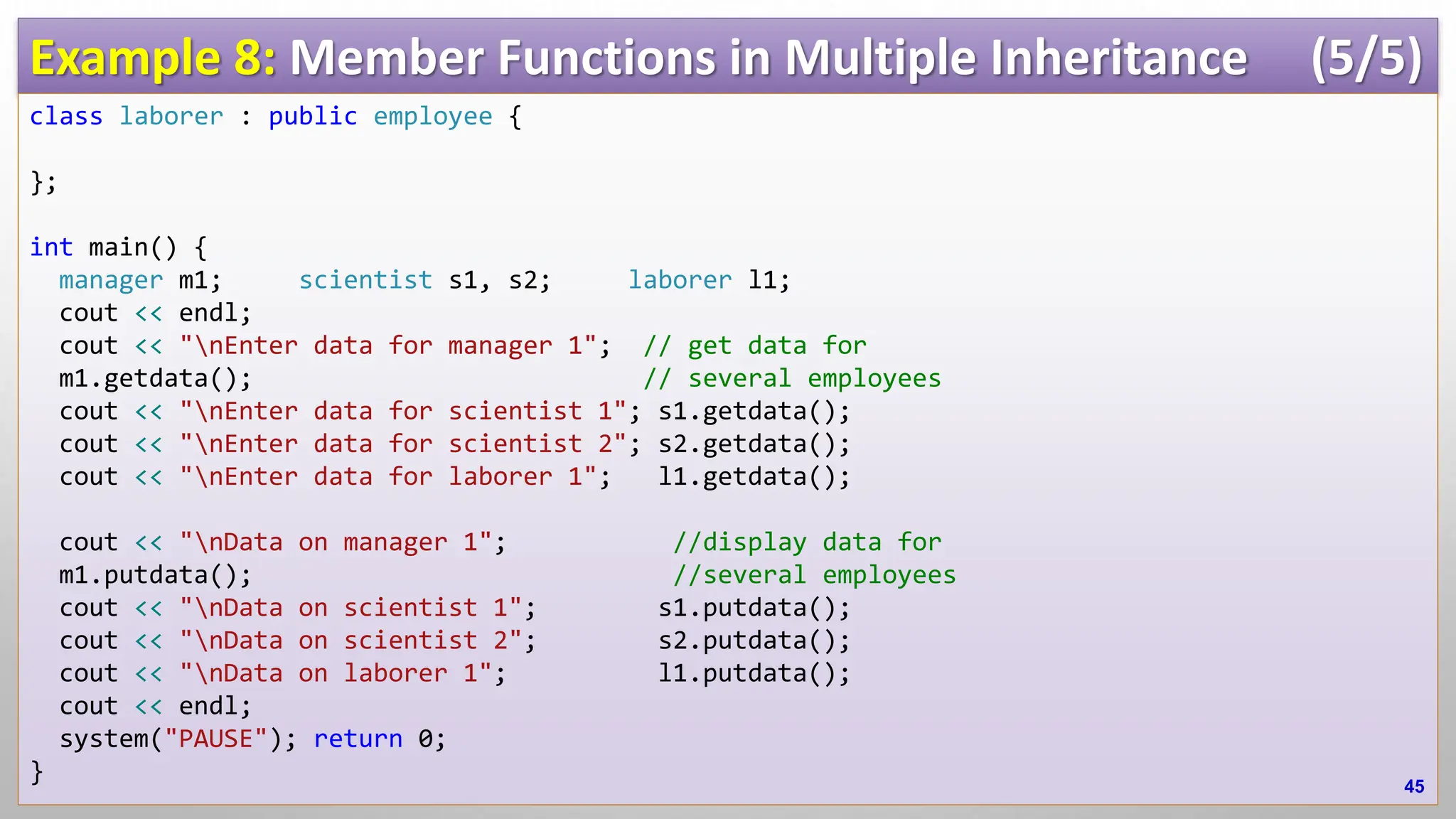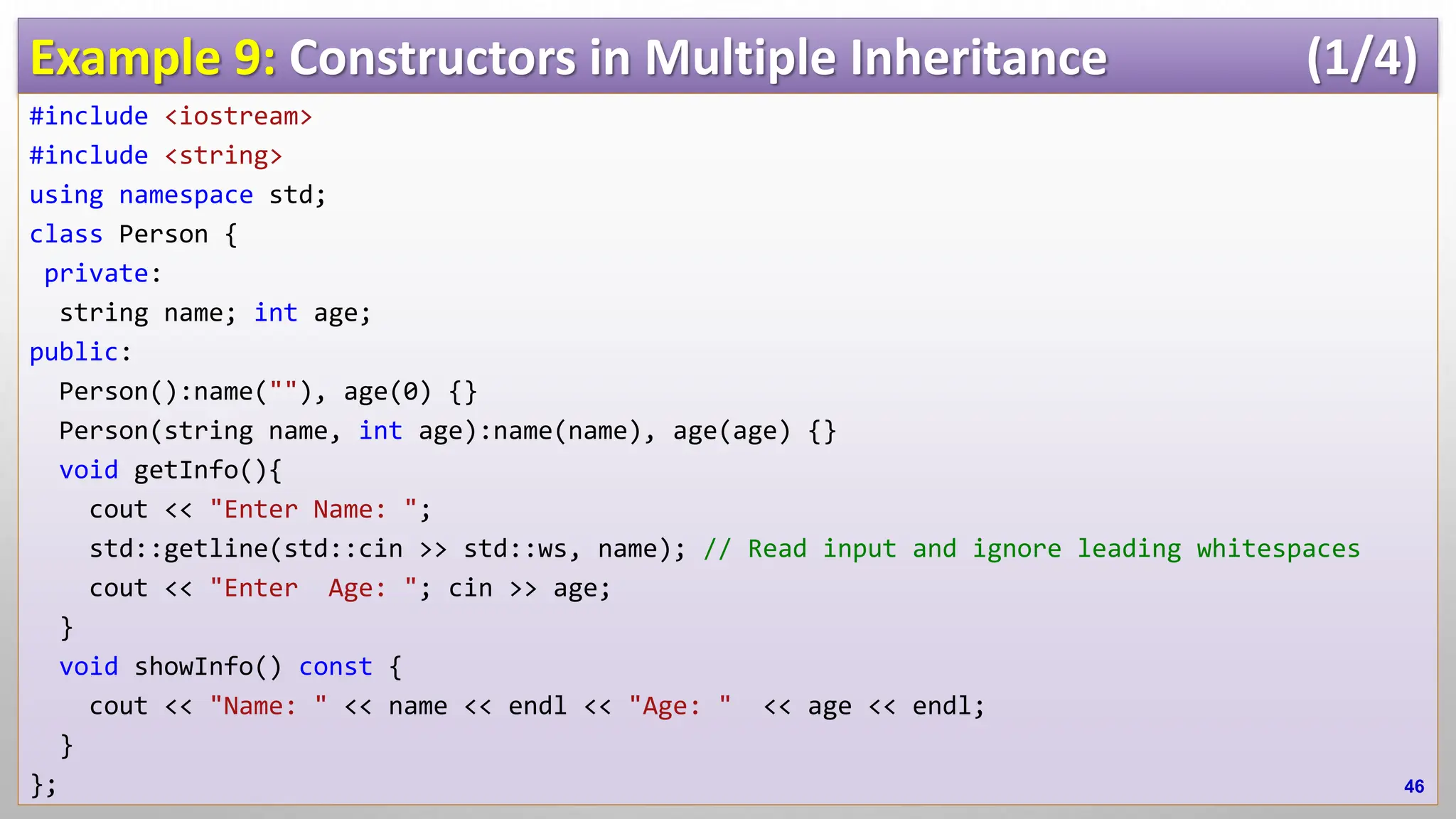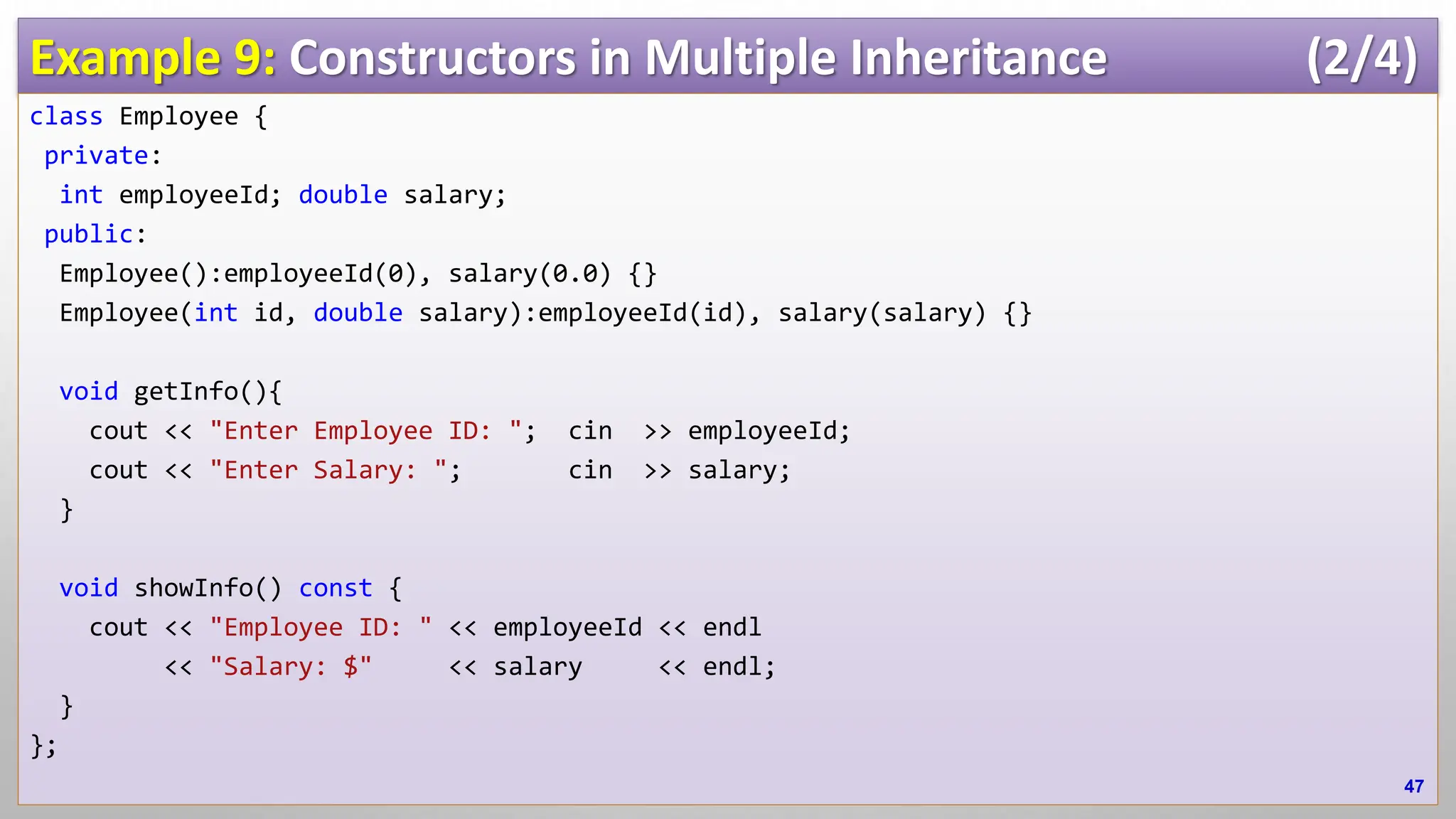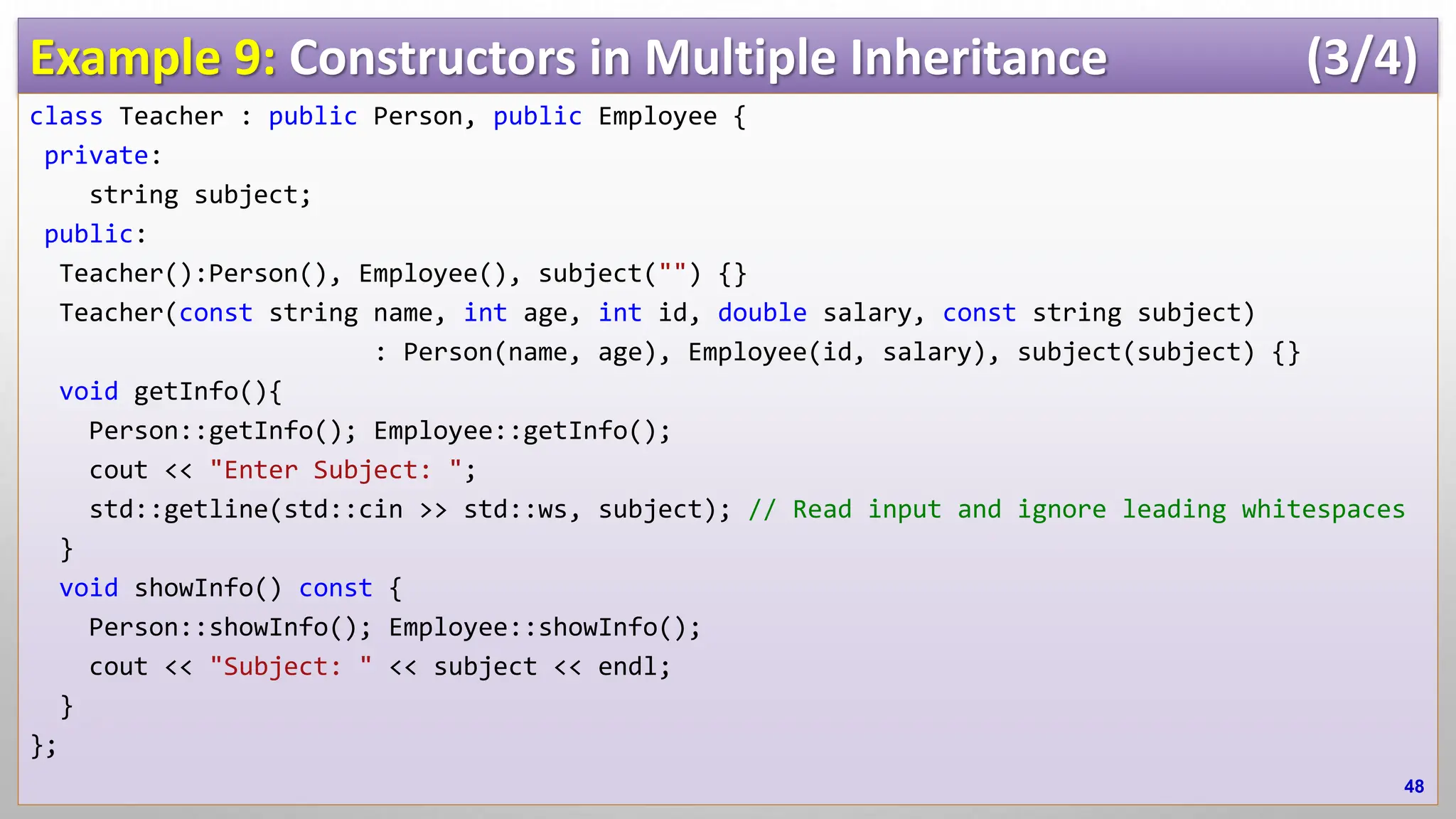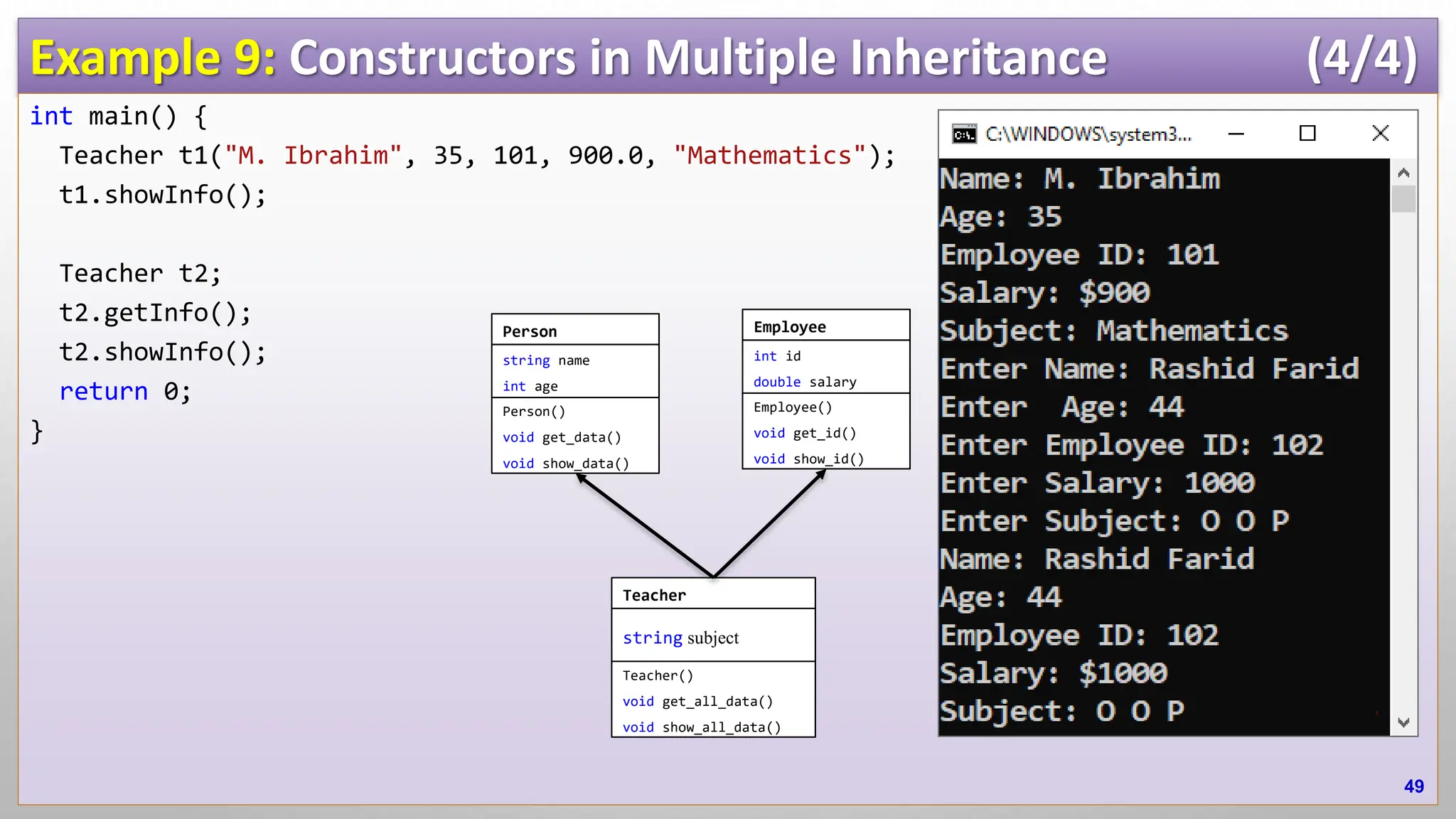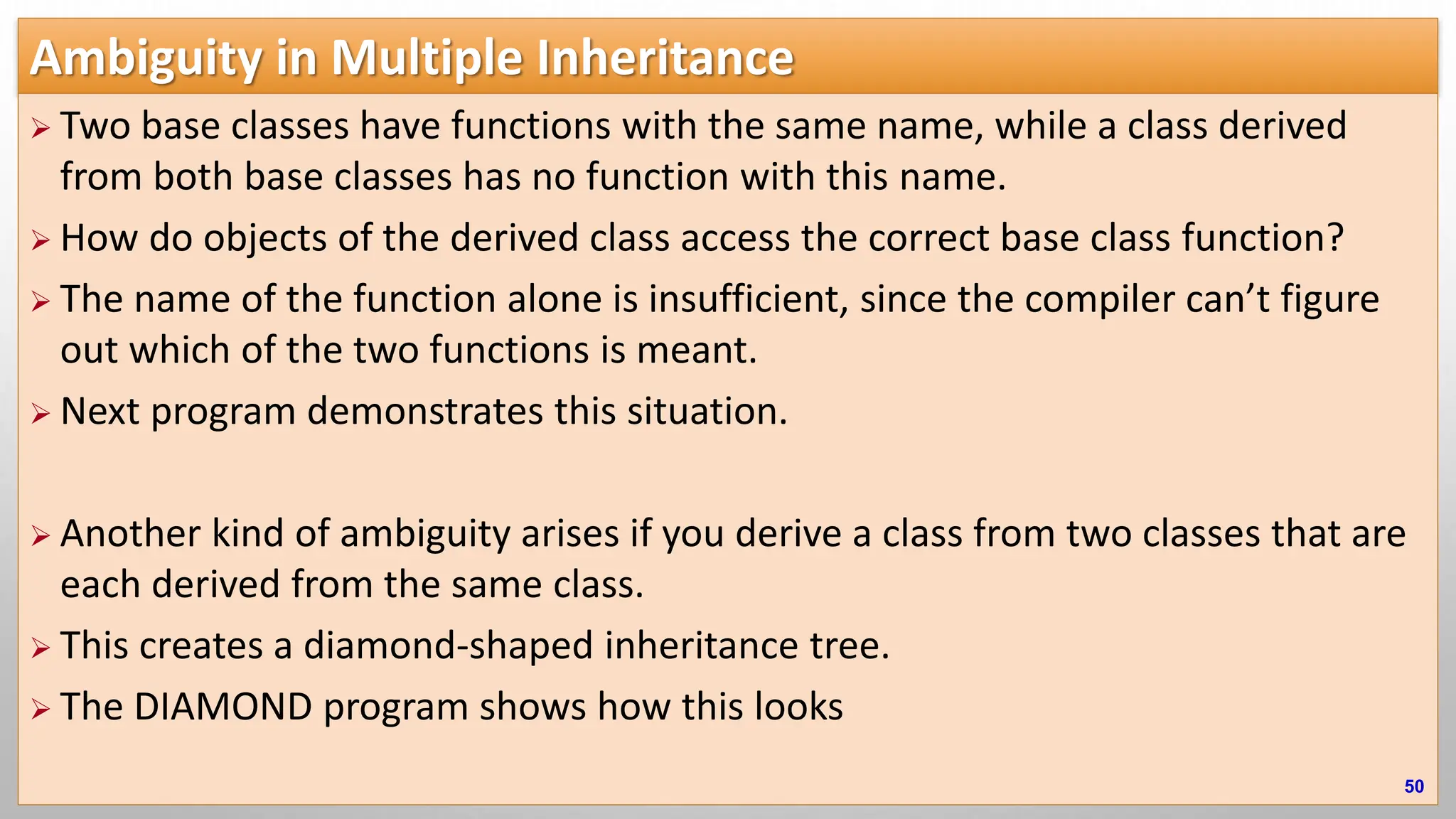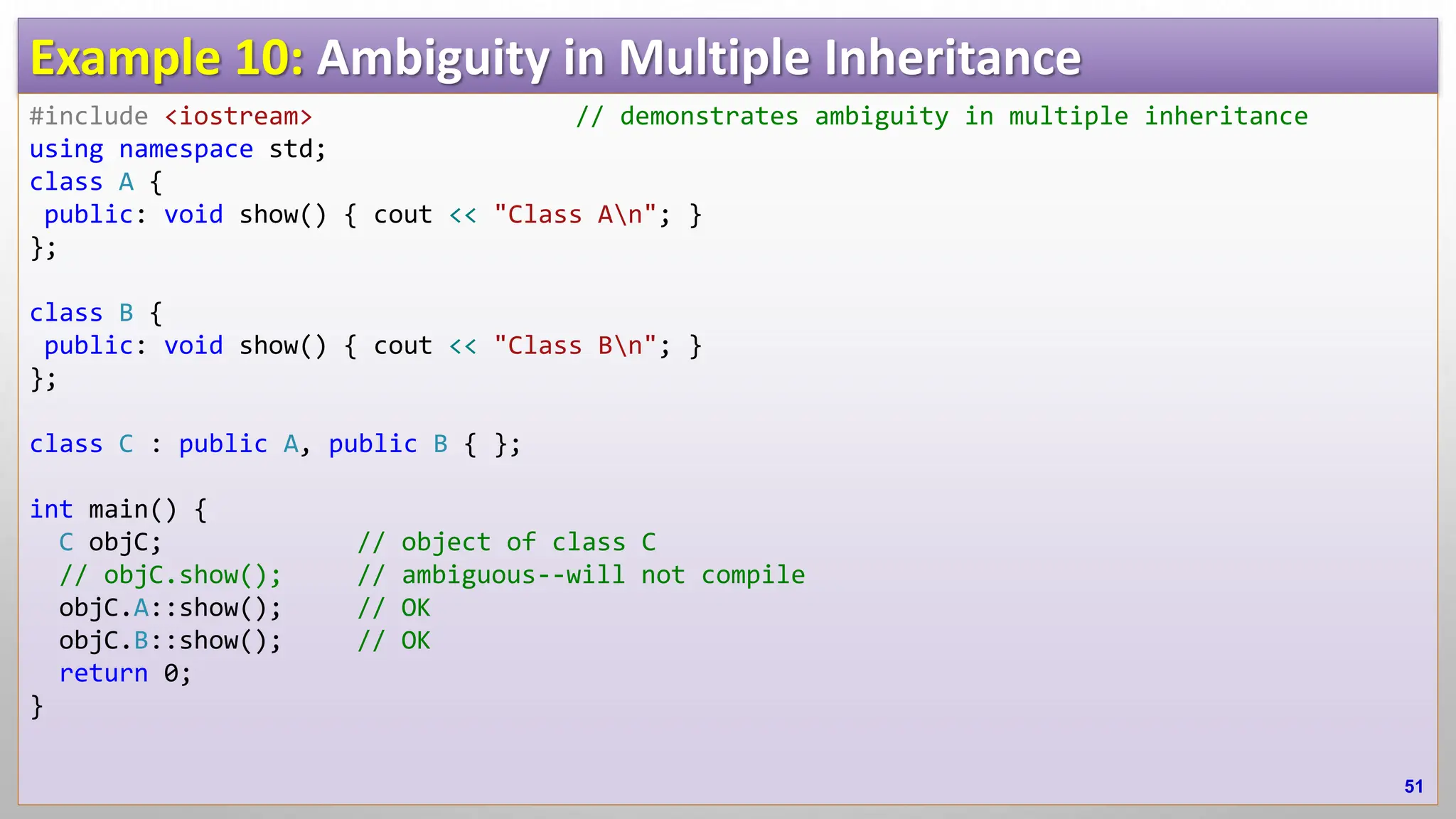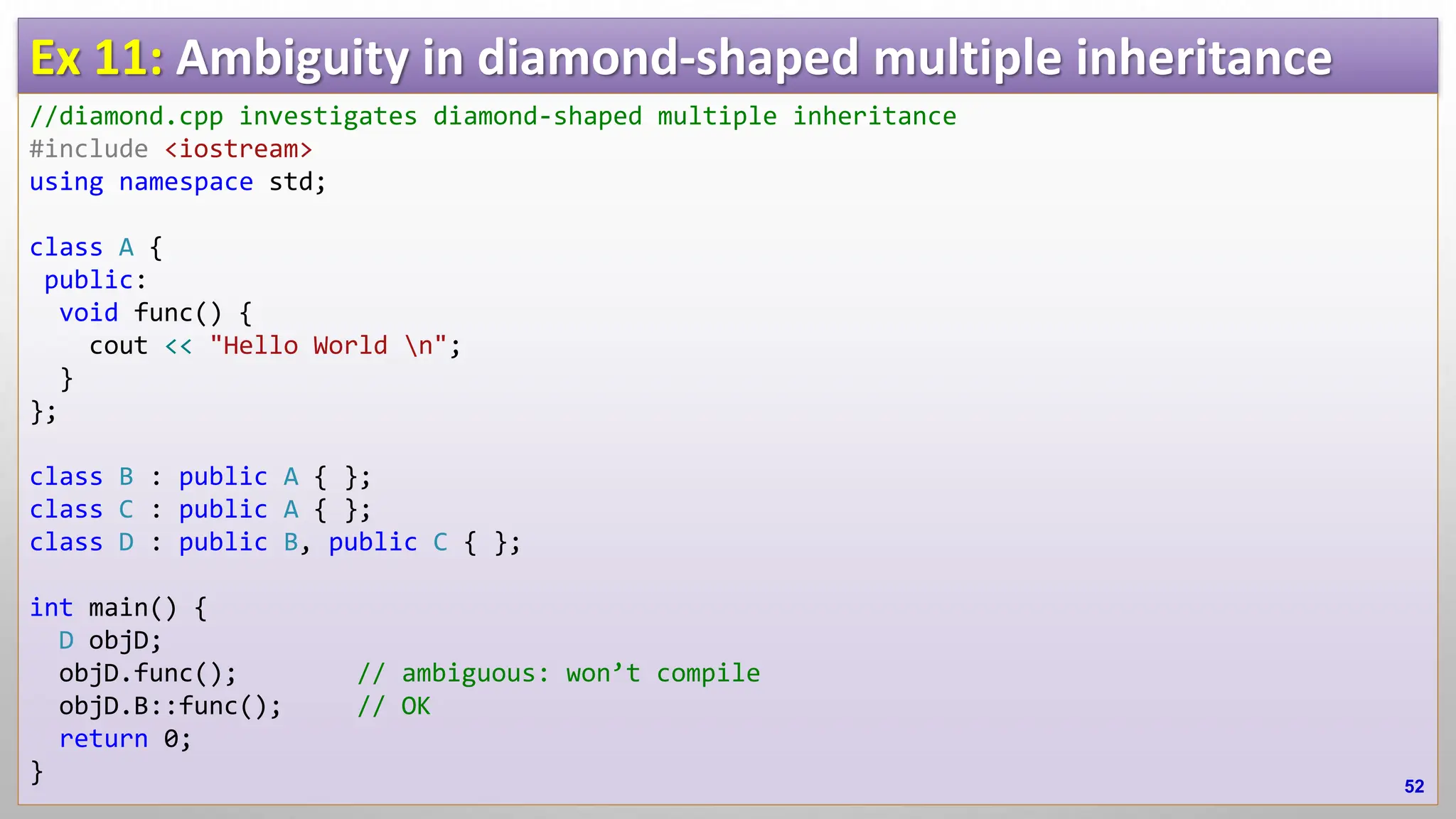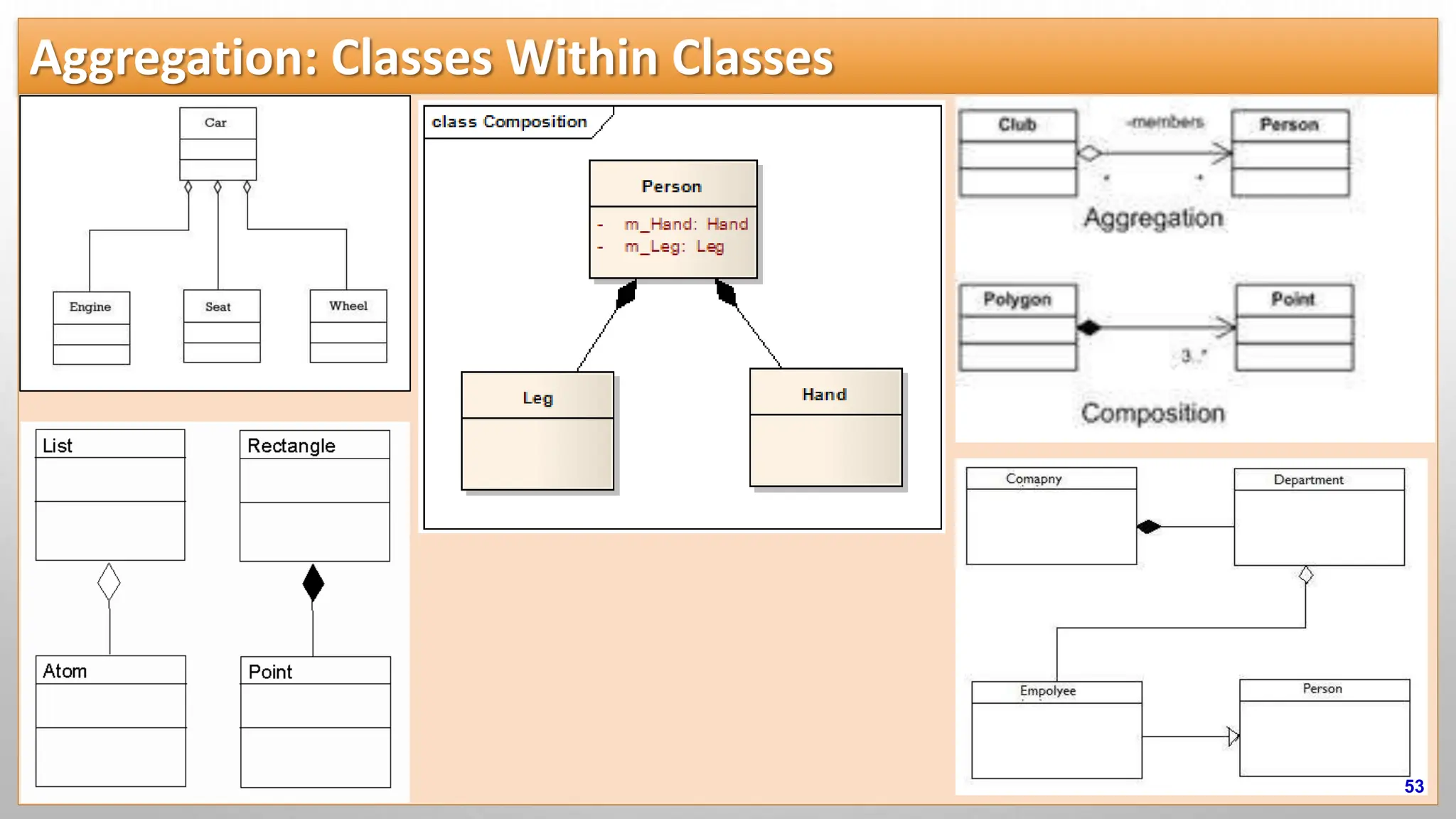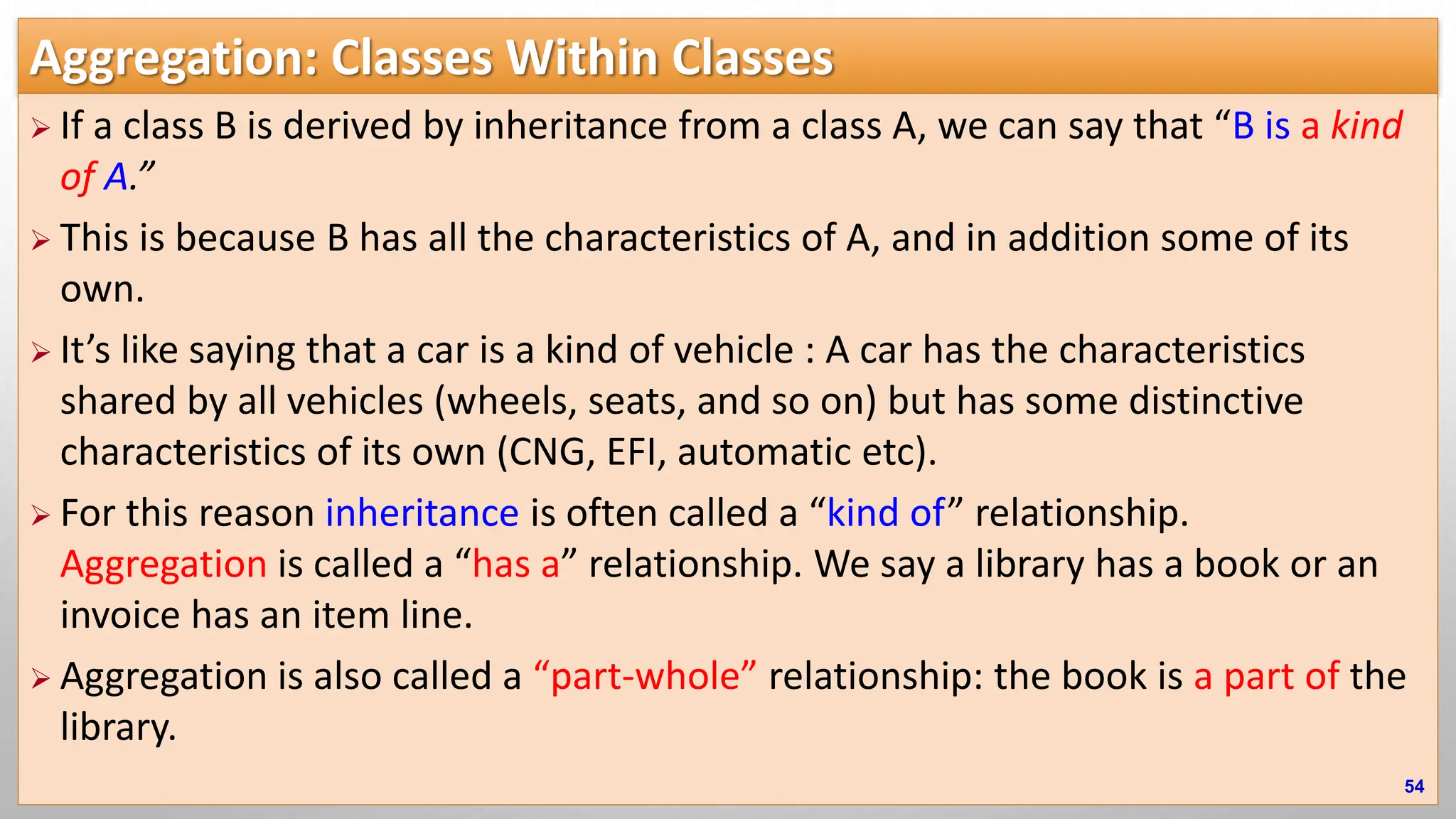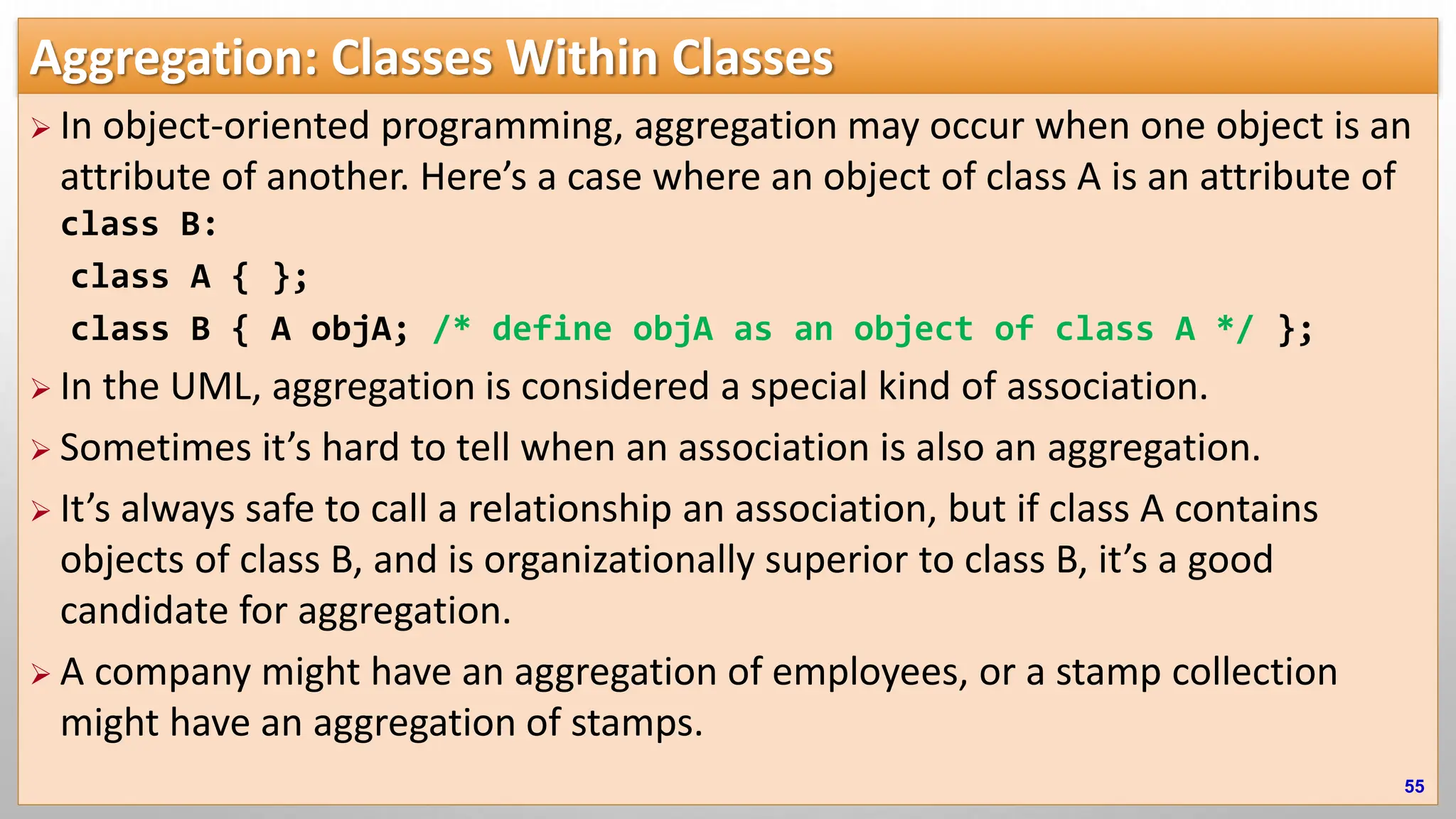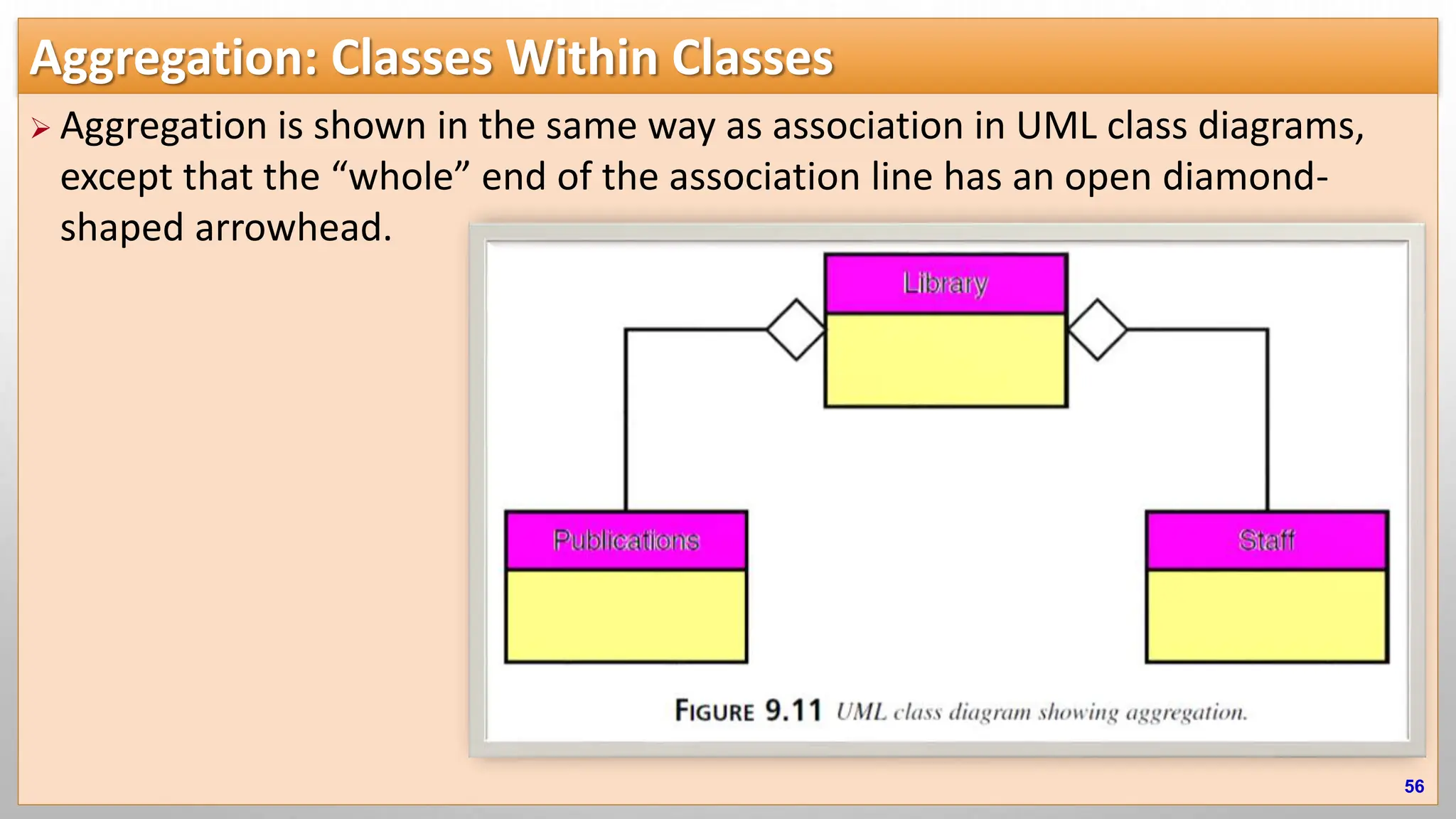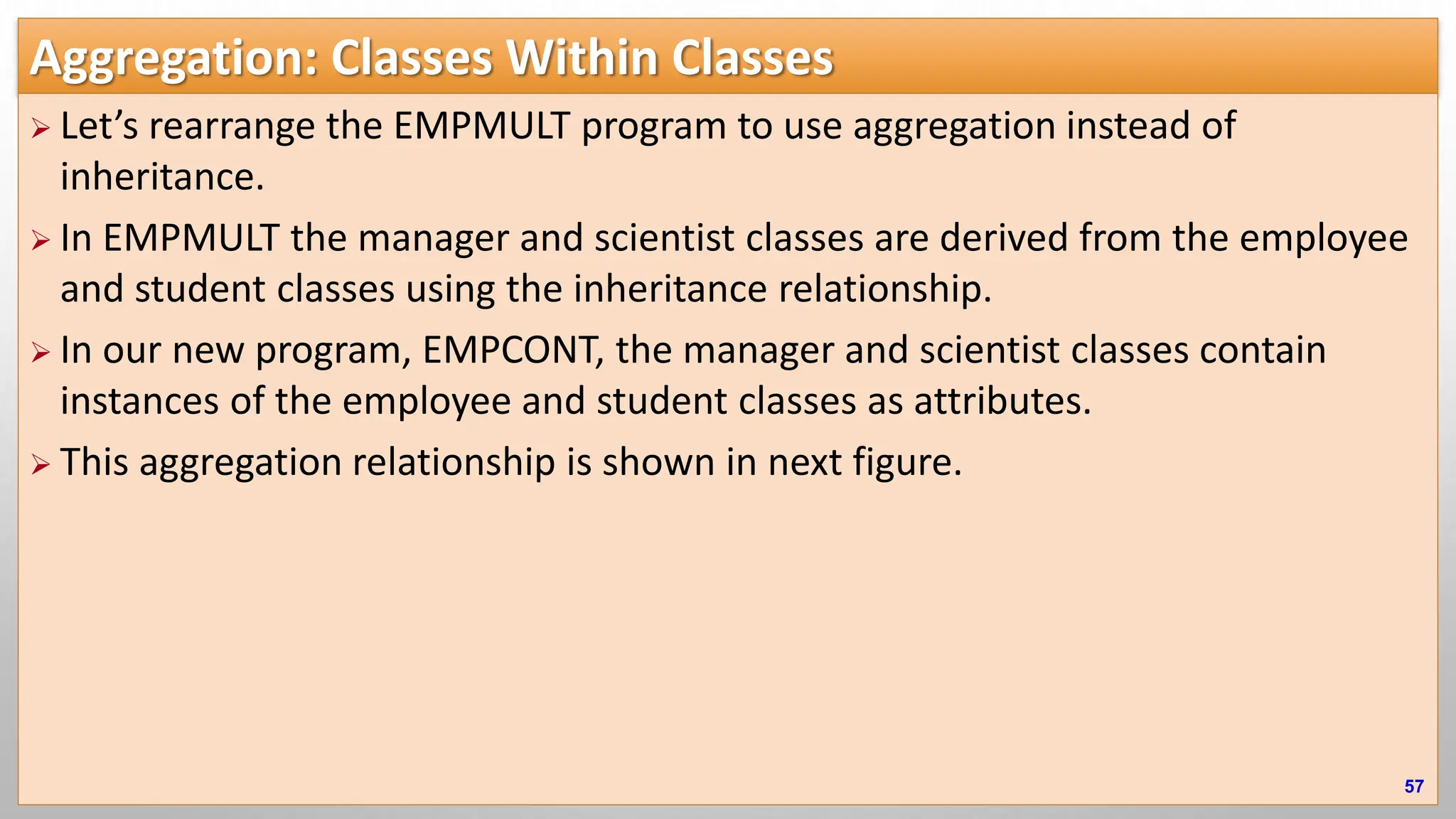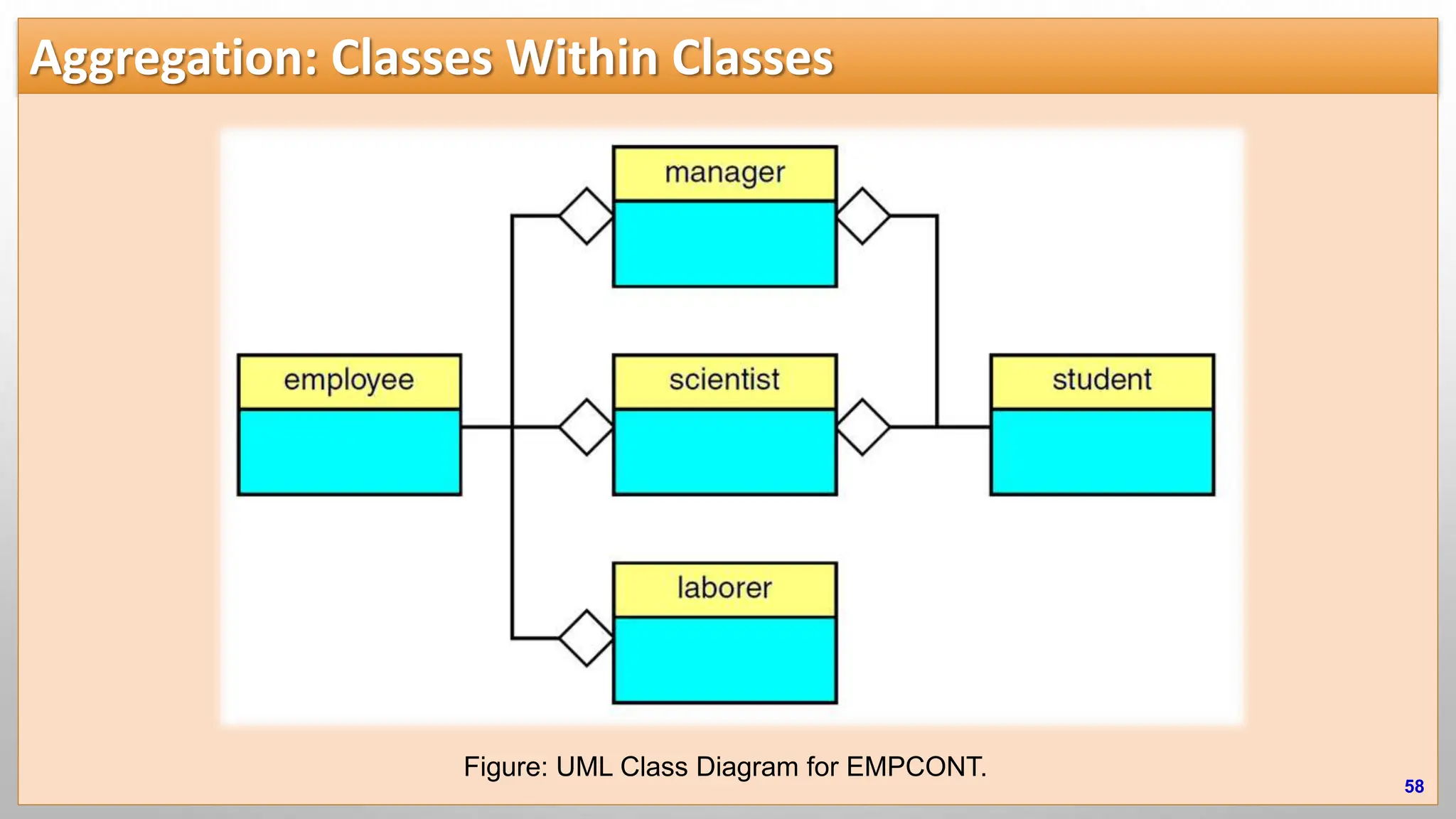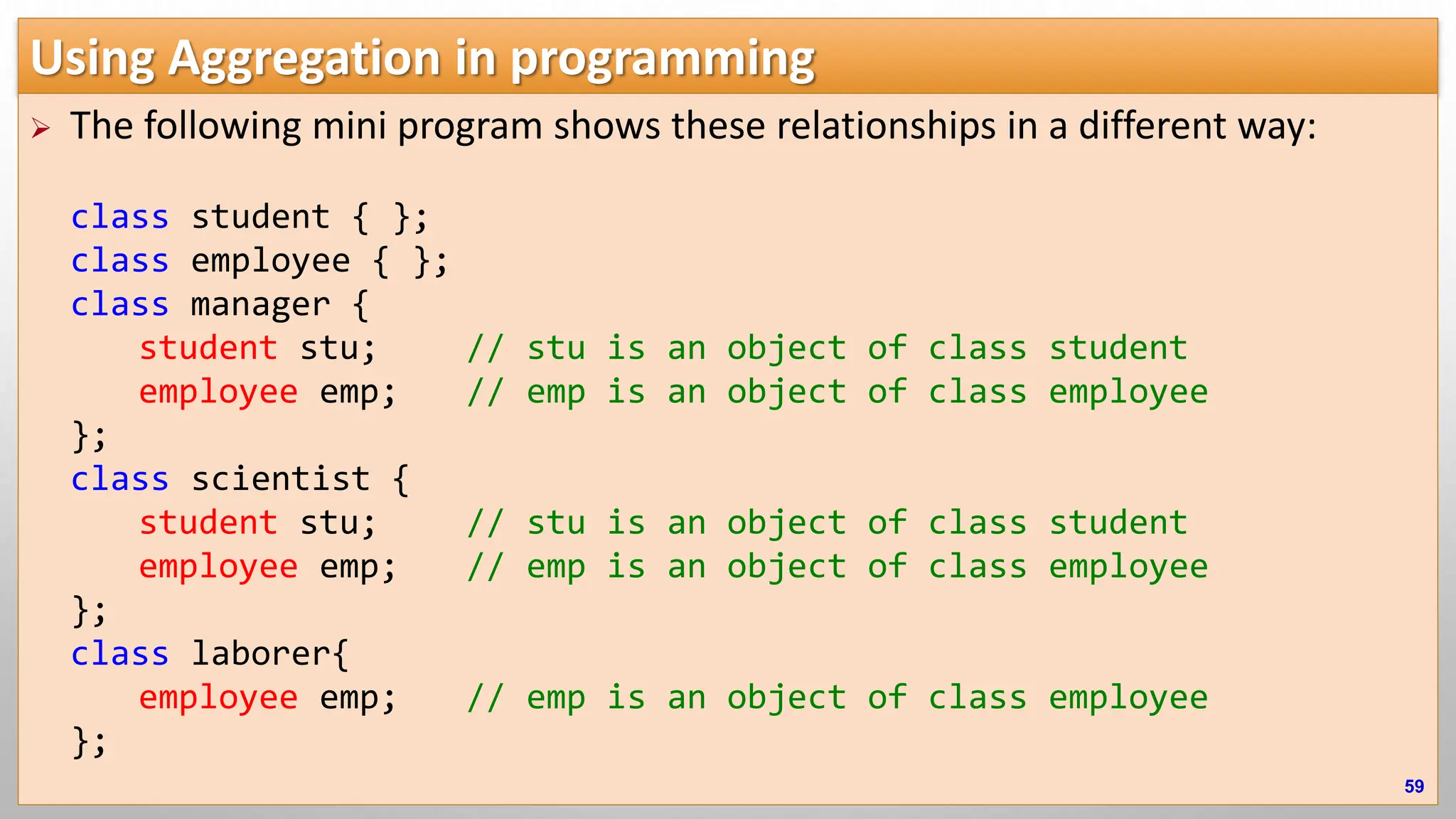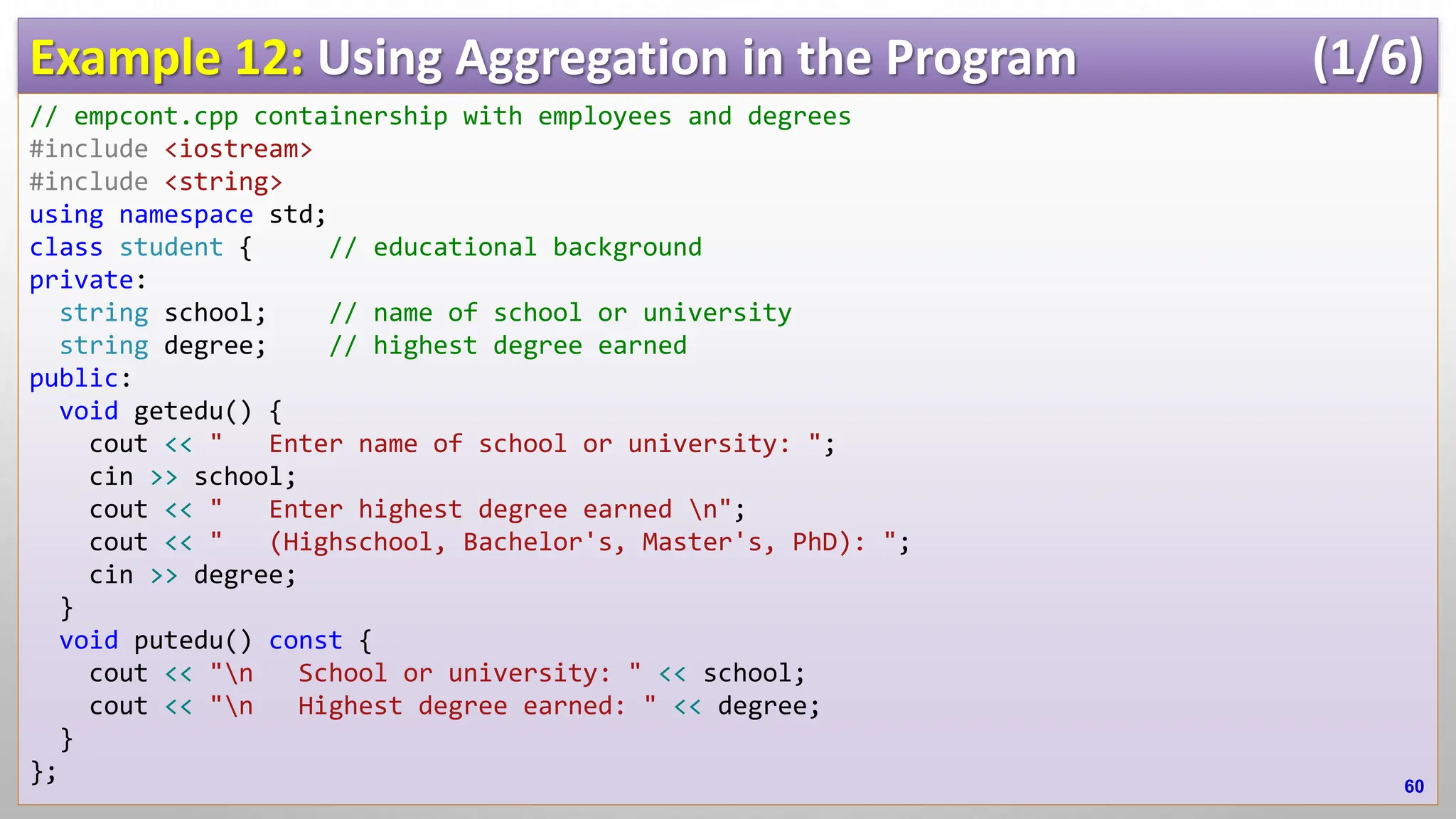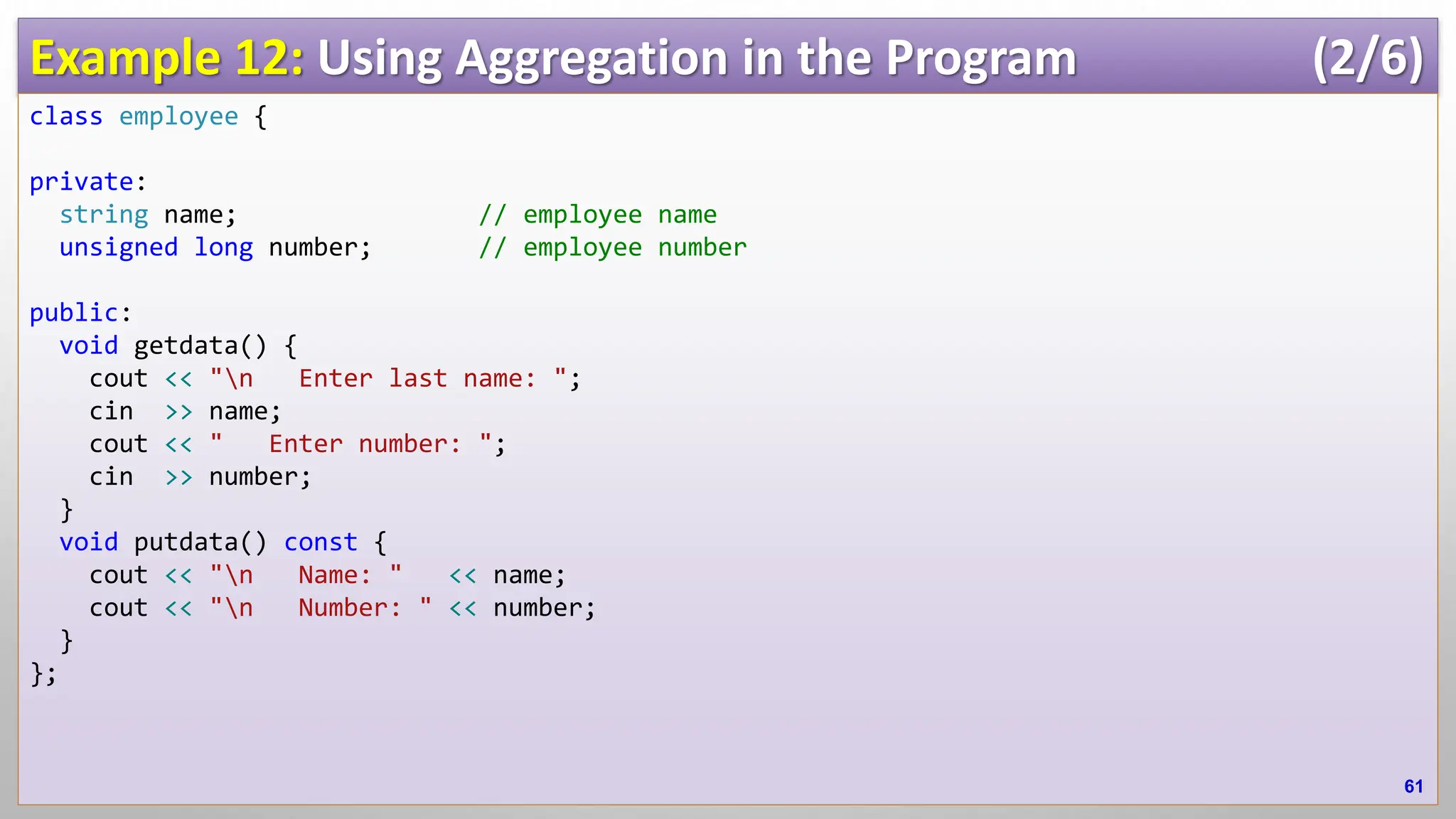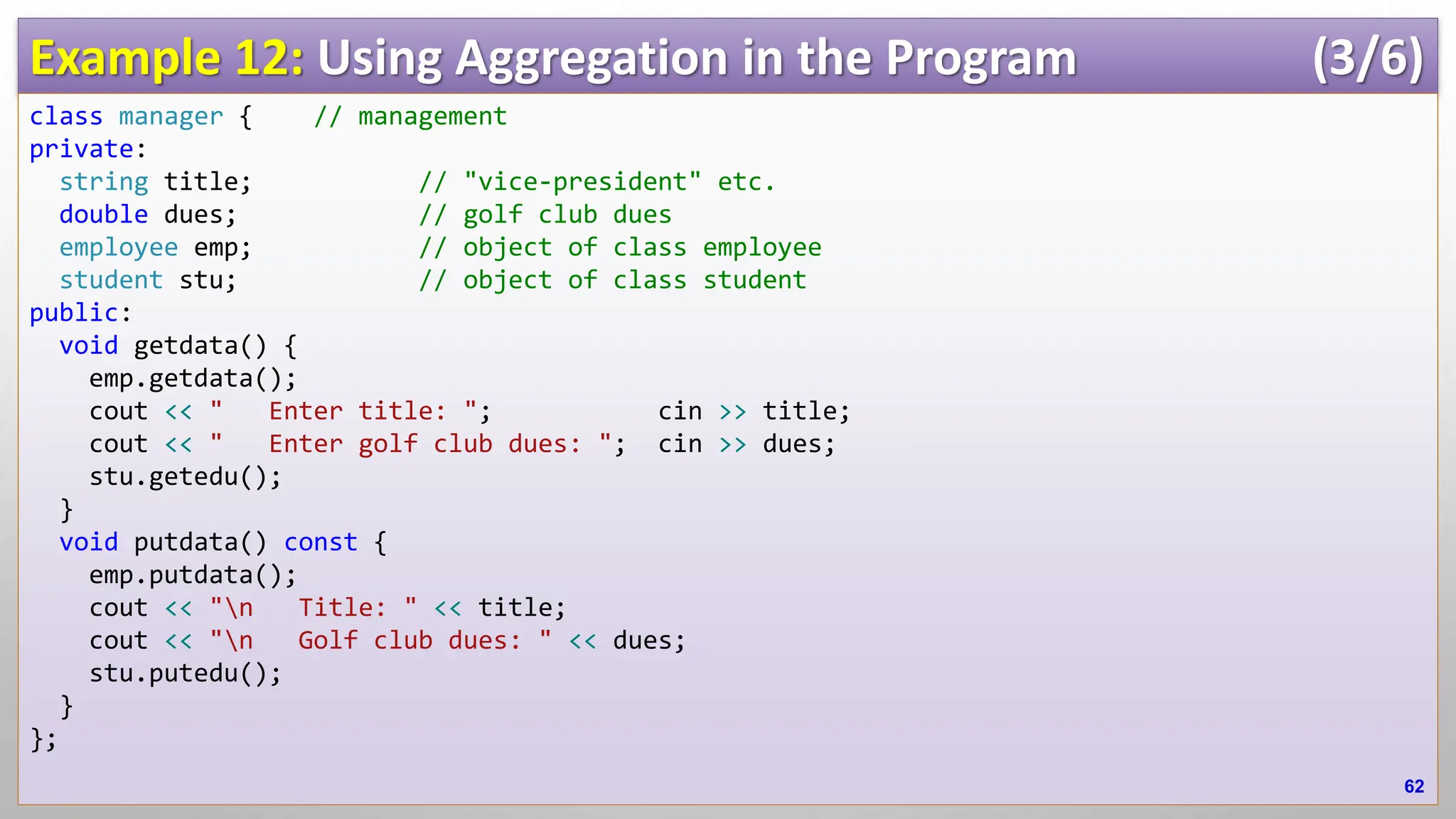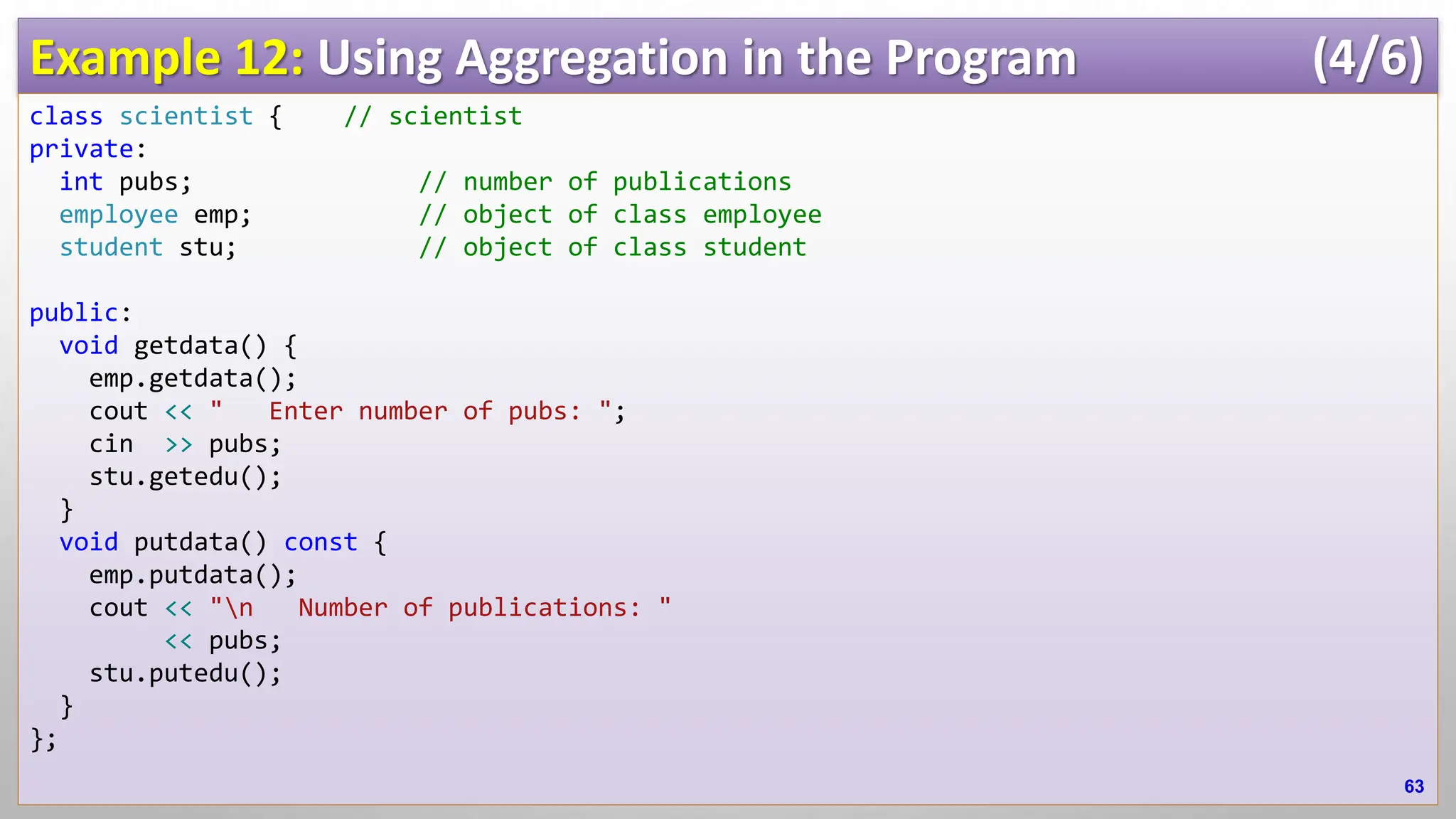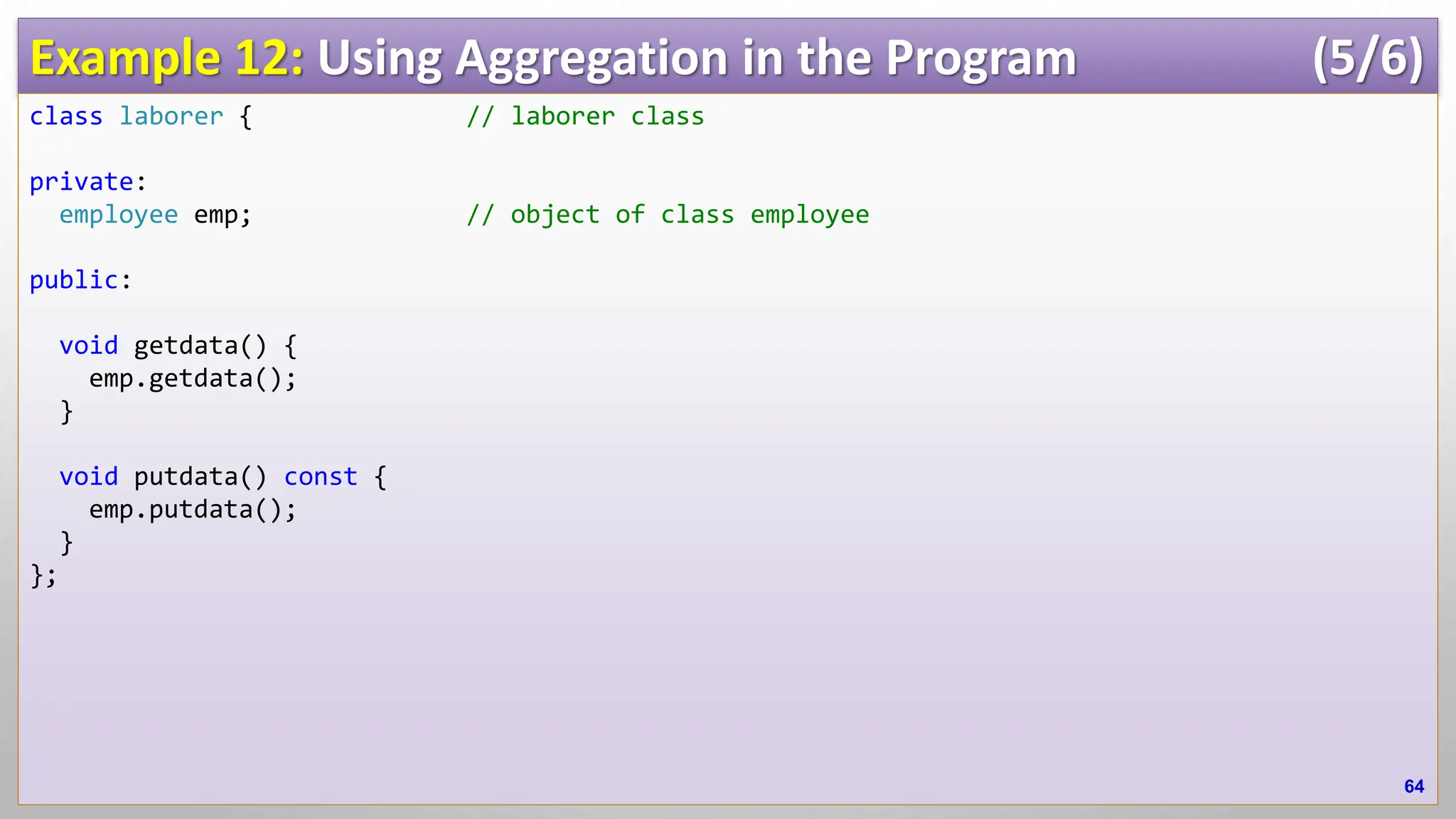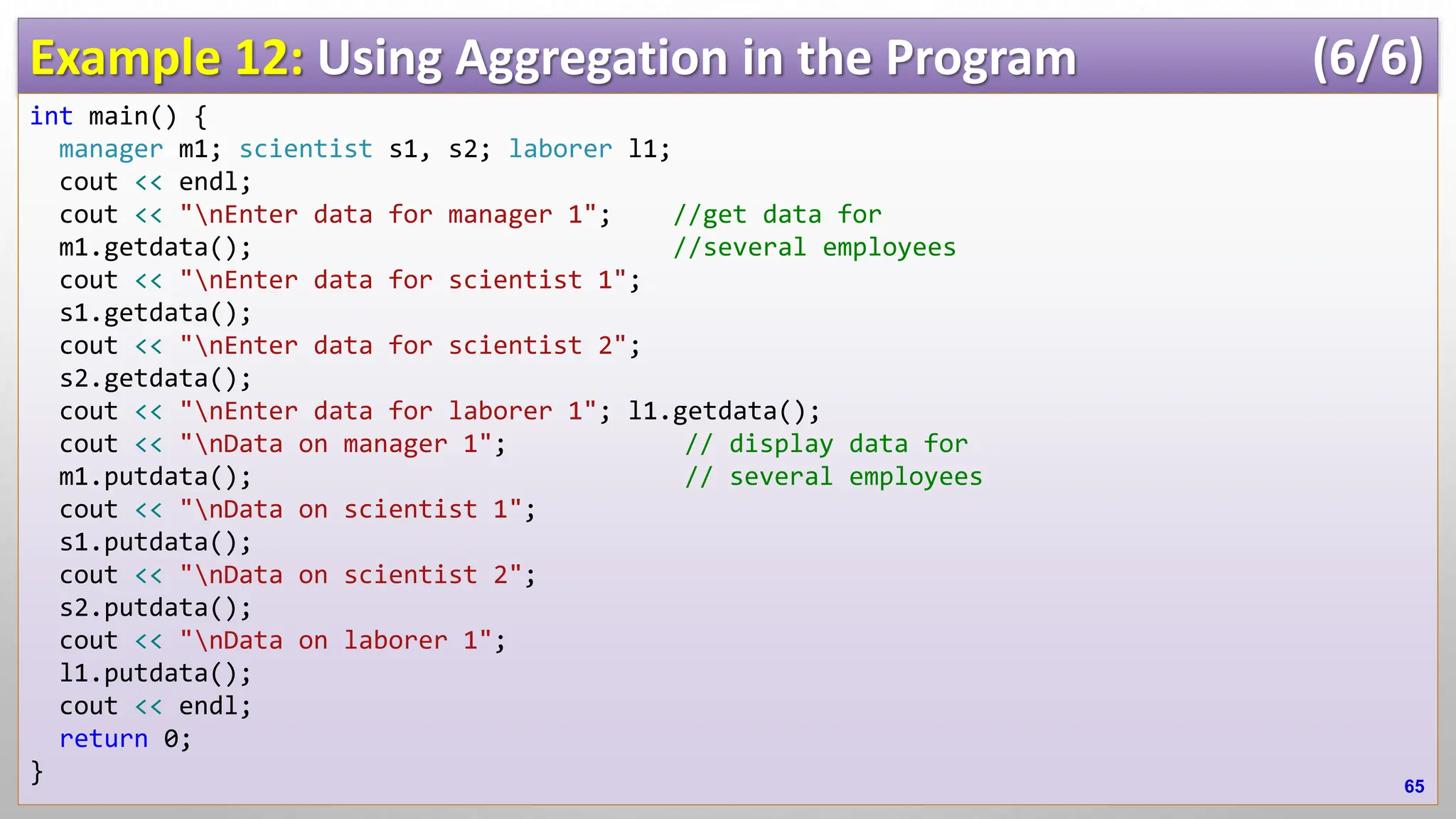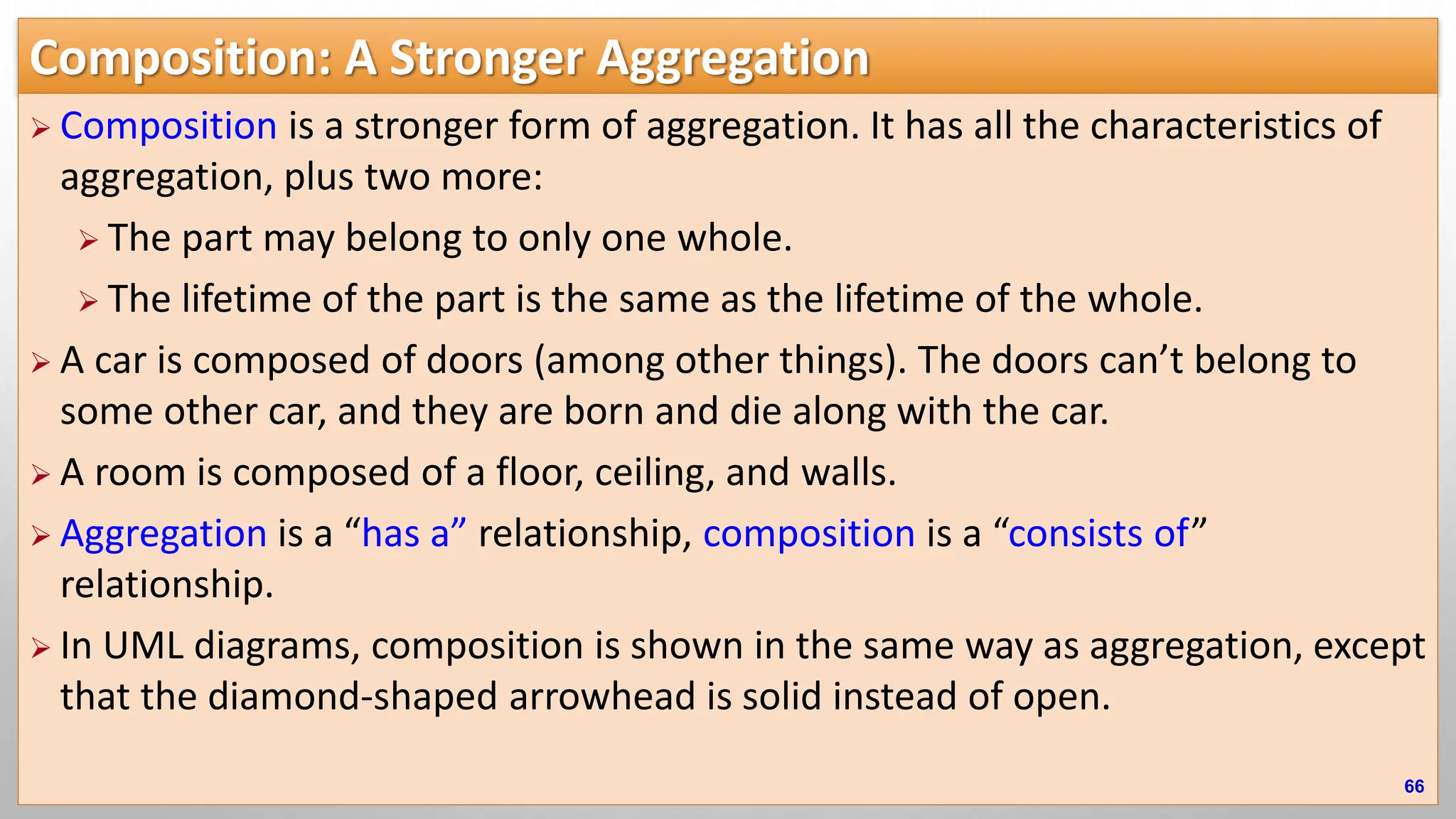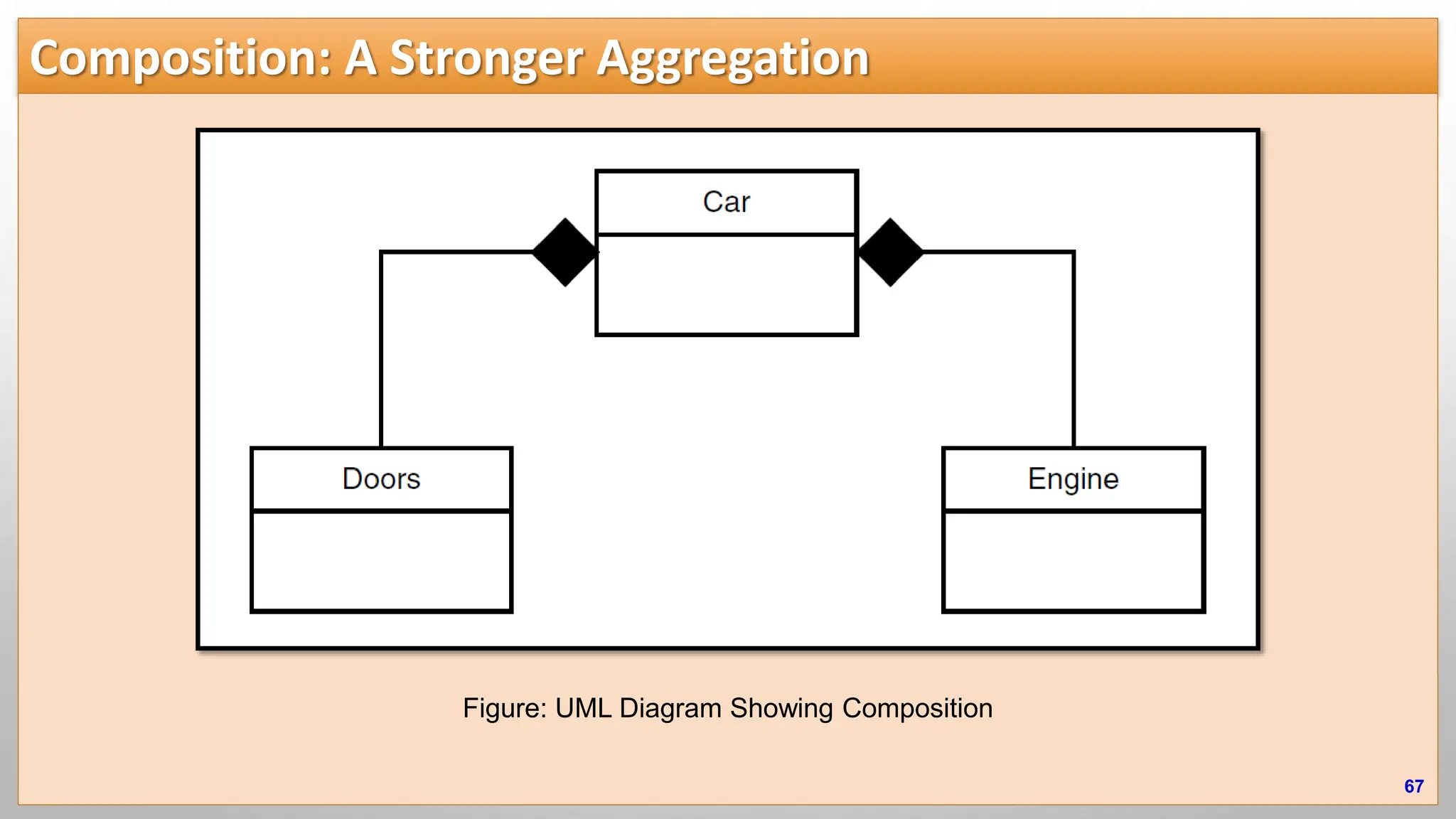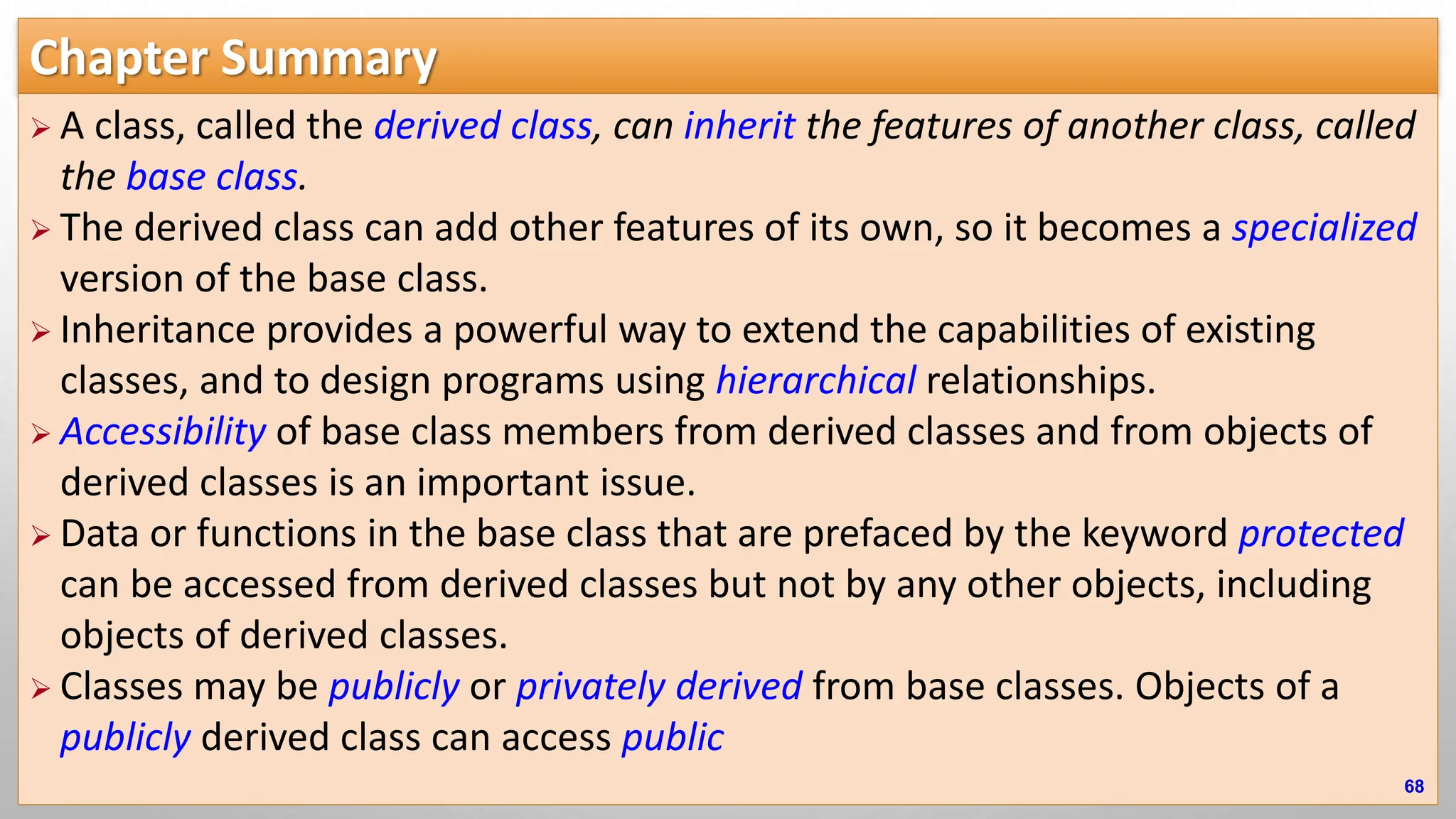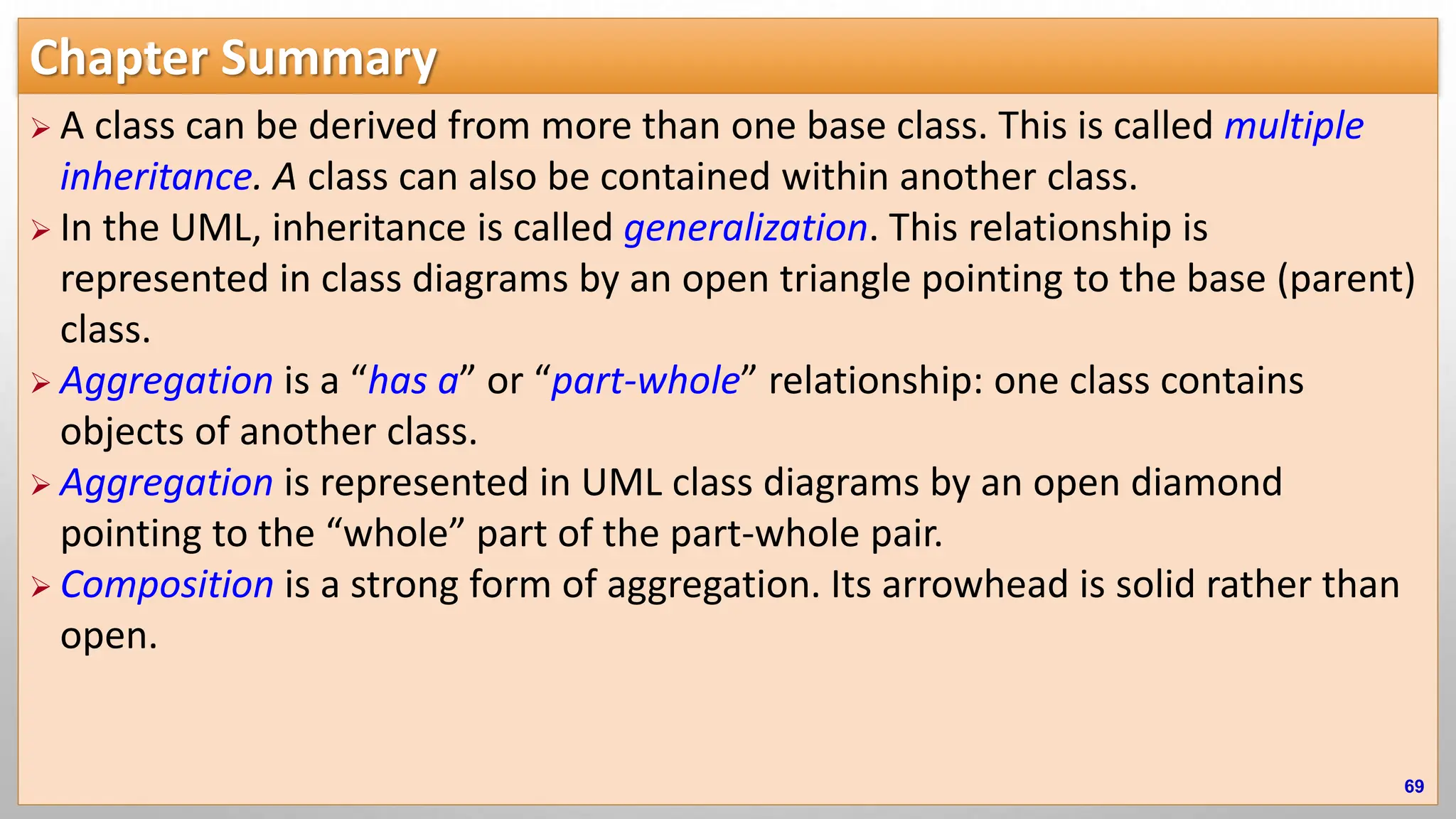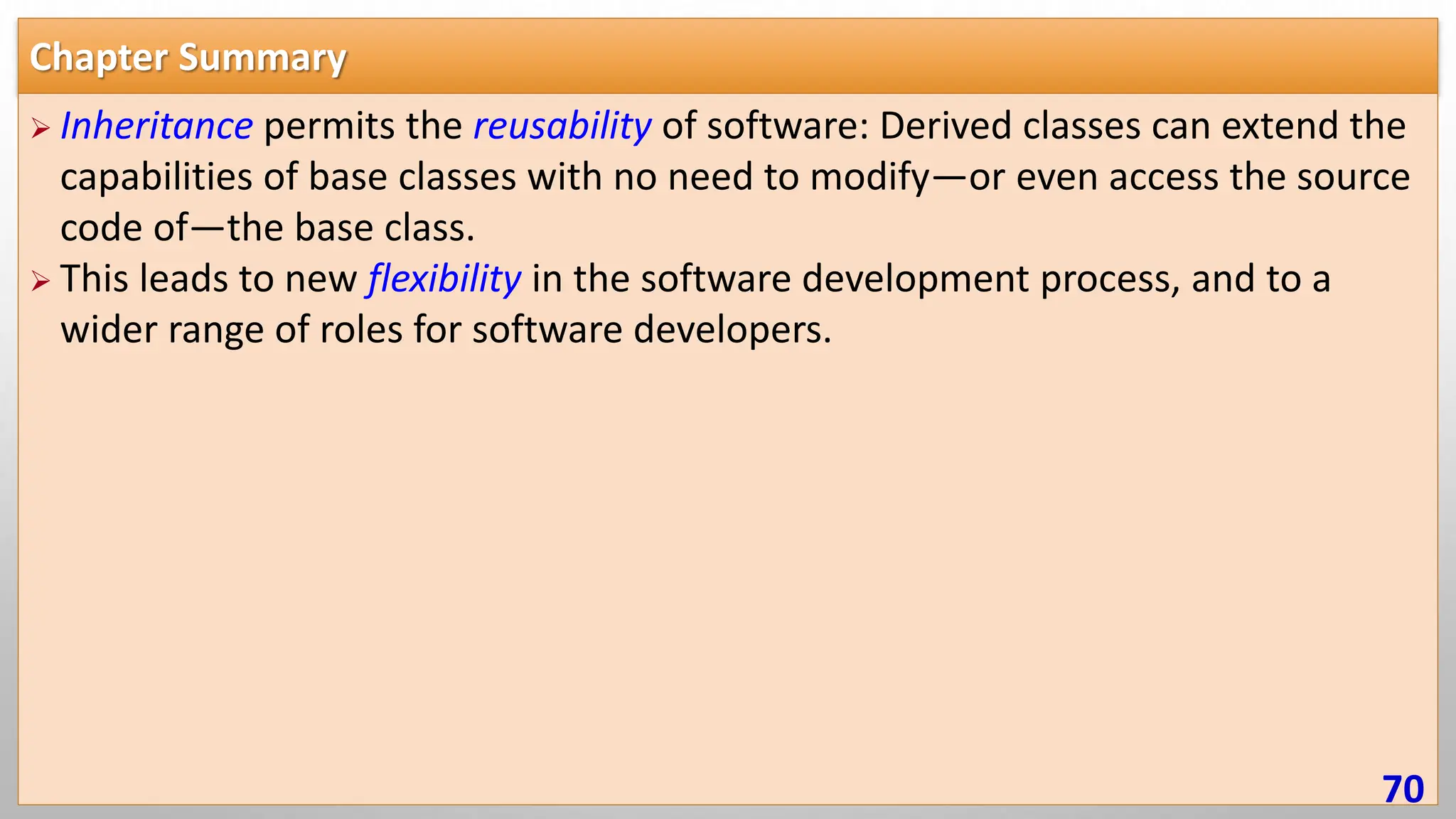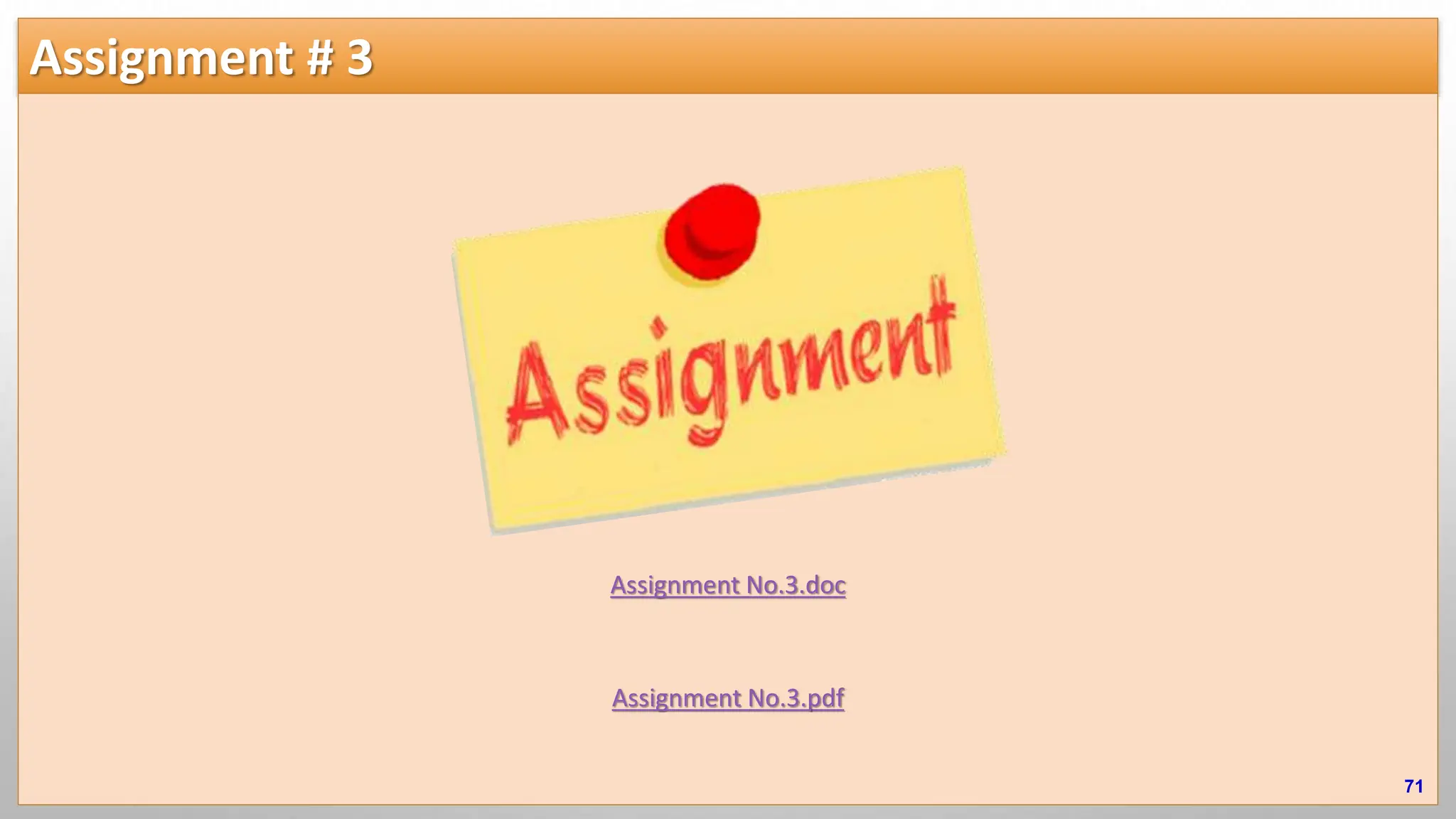The document explains the concept of inheritance in object-oriented programming, detailing how derived classes inherit properties and methods from base classes. It discusses the benefits of inheritance, including specialization, generalization, and enhanced efficiency, along with examples of class hierarchies and terminology. Various coding examples demonstrate inheritance with specific implementations, including constructors and method overriding.
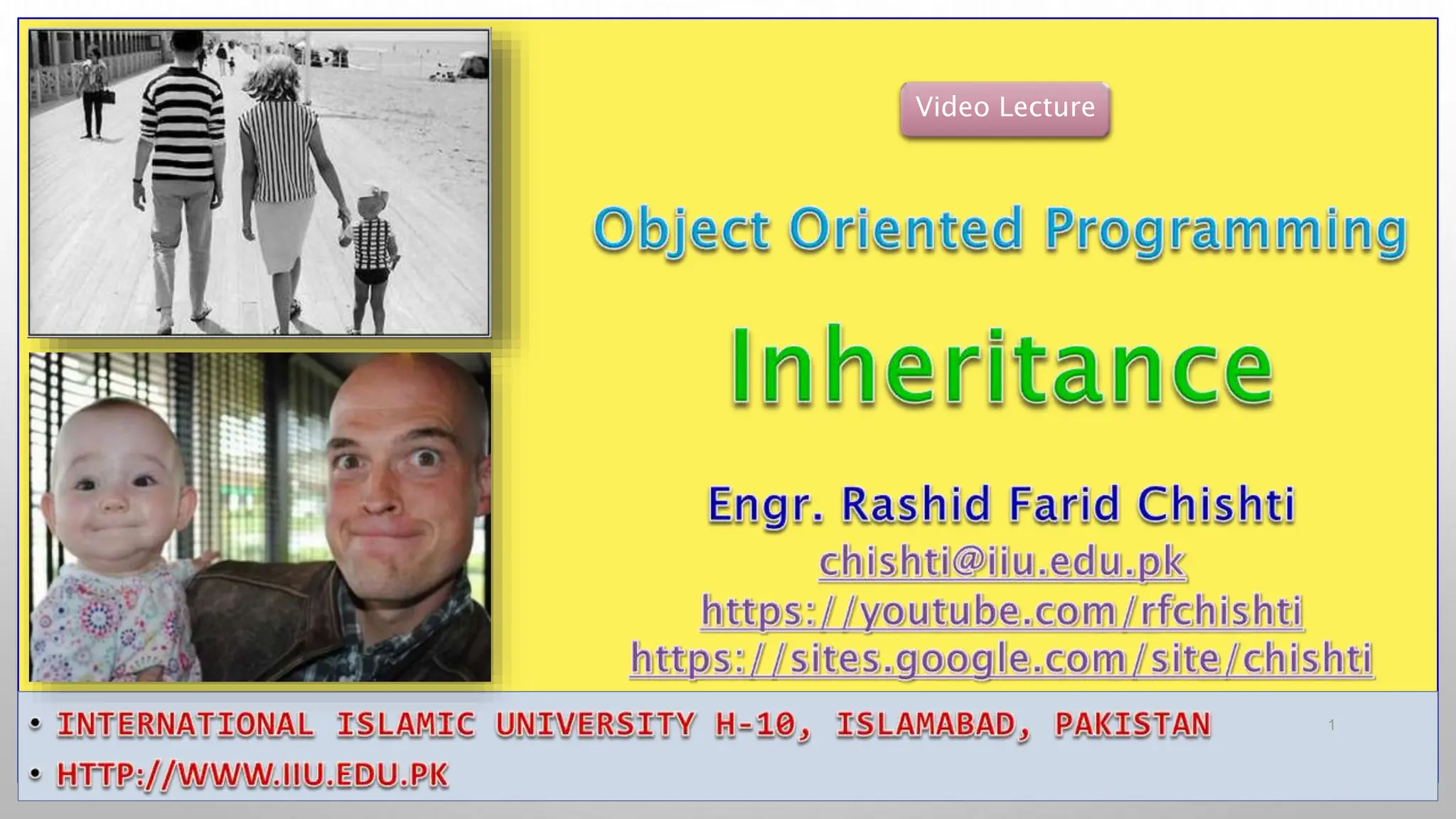
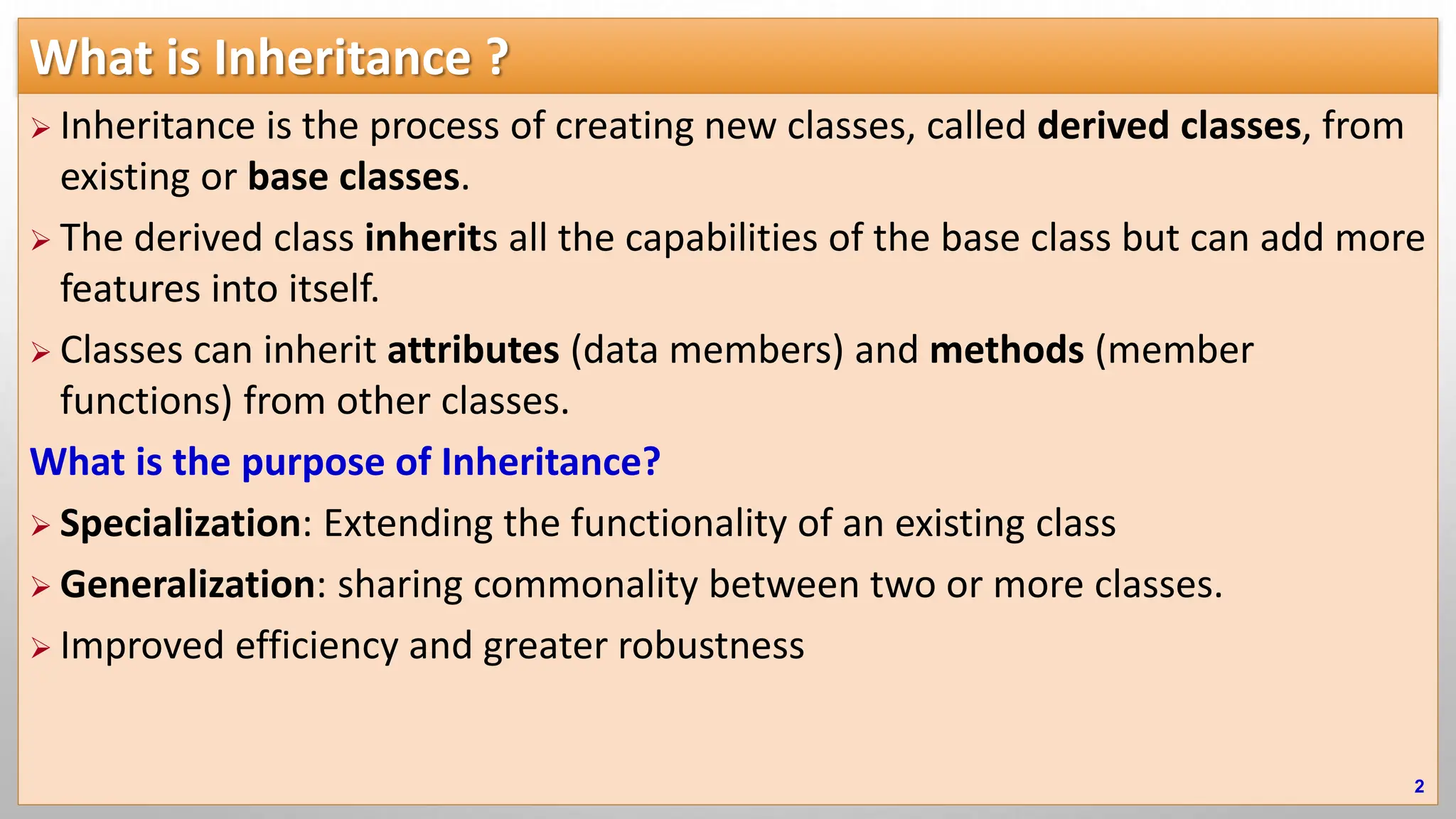


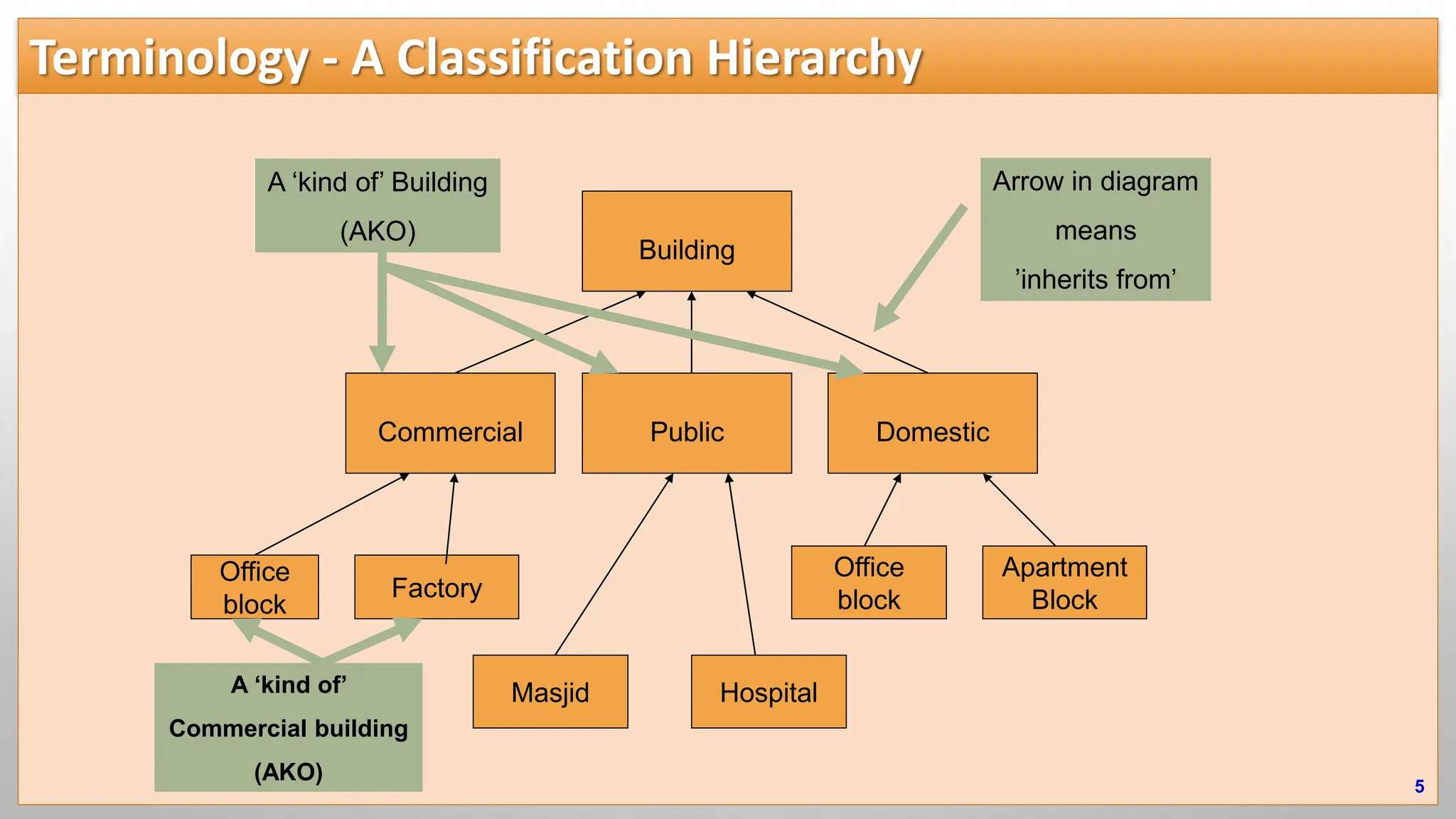

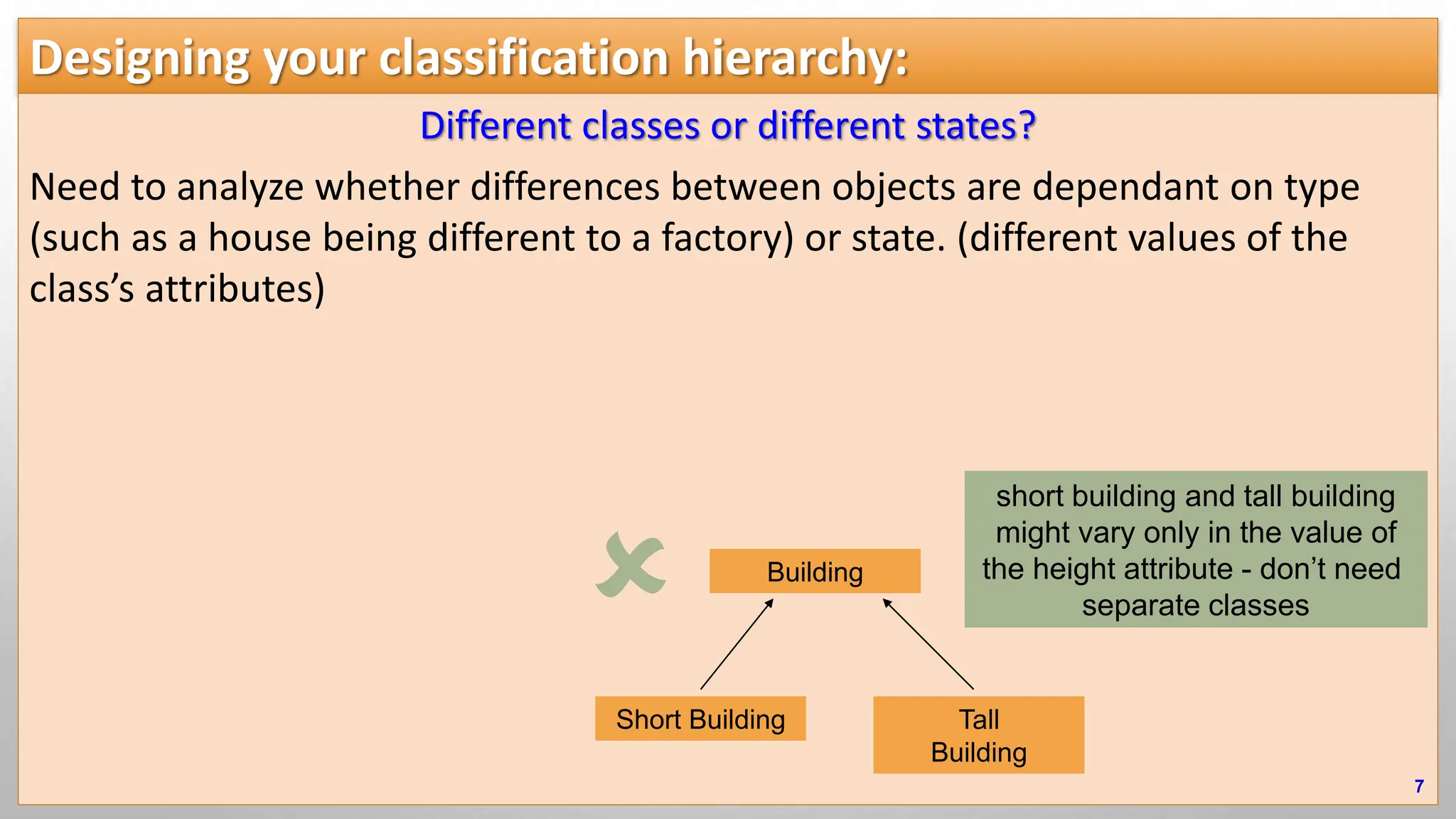
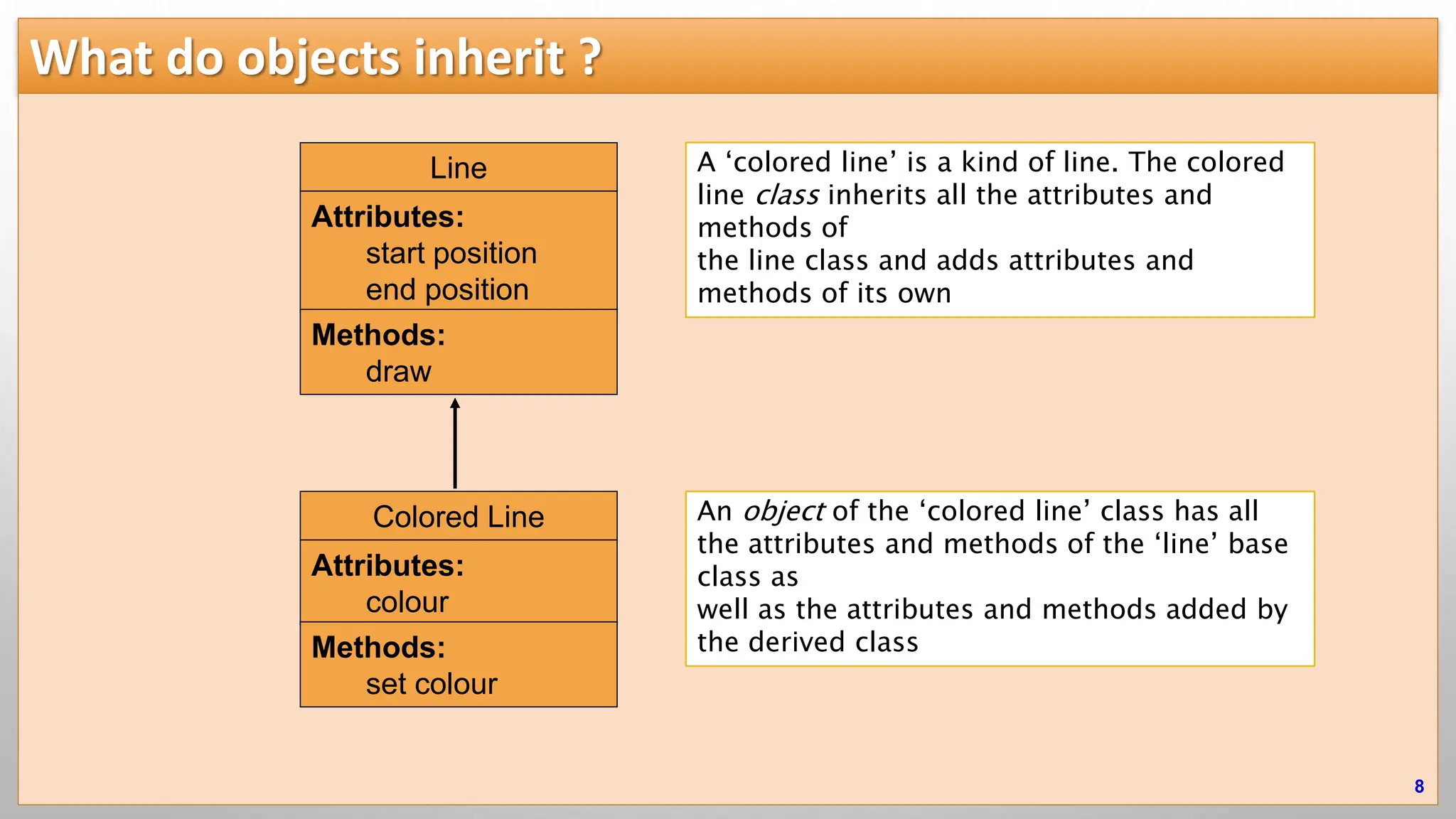
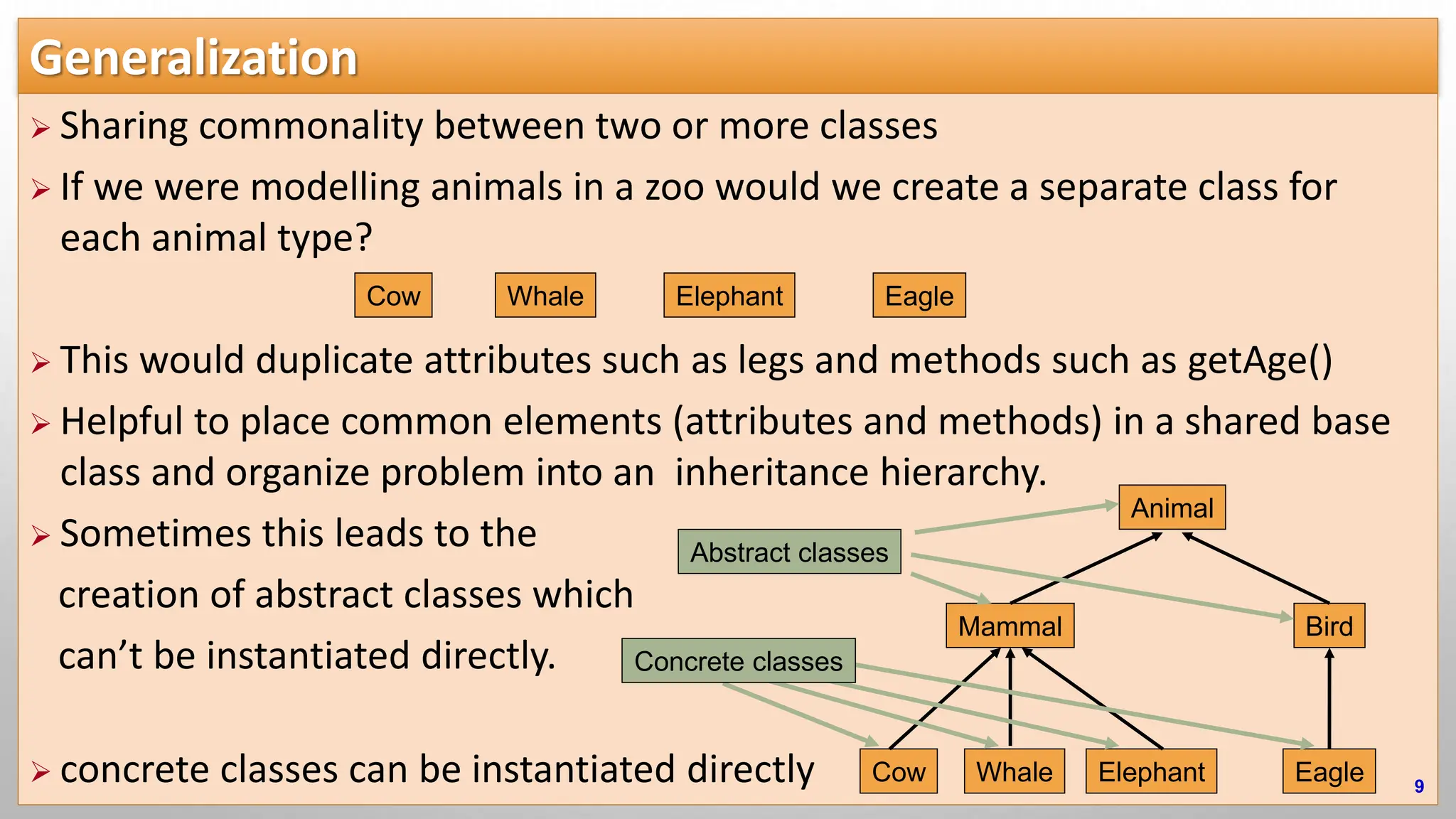
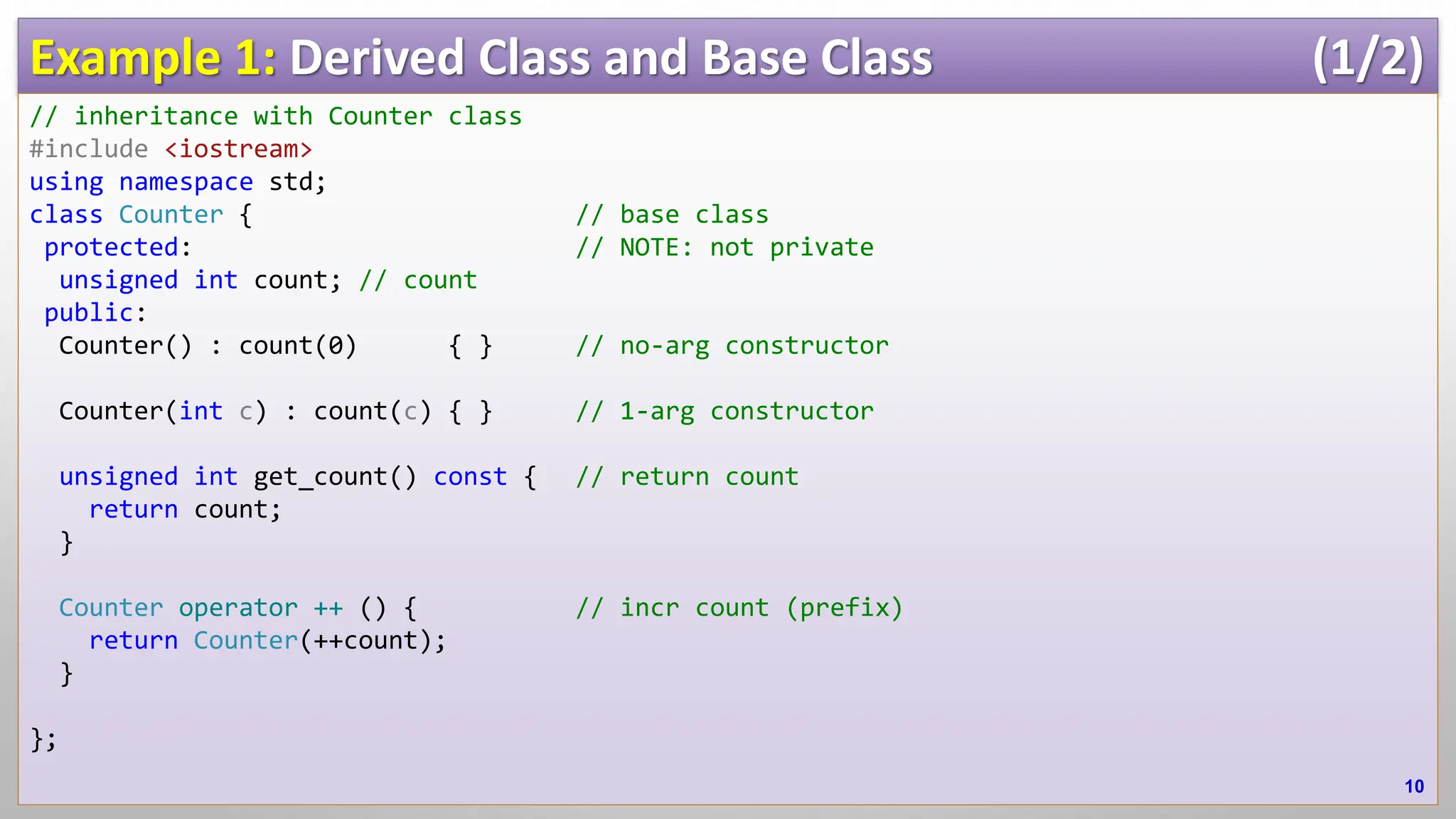
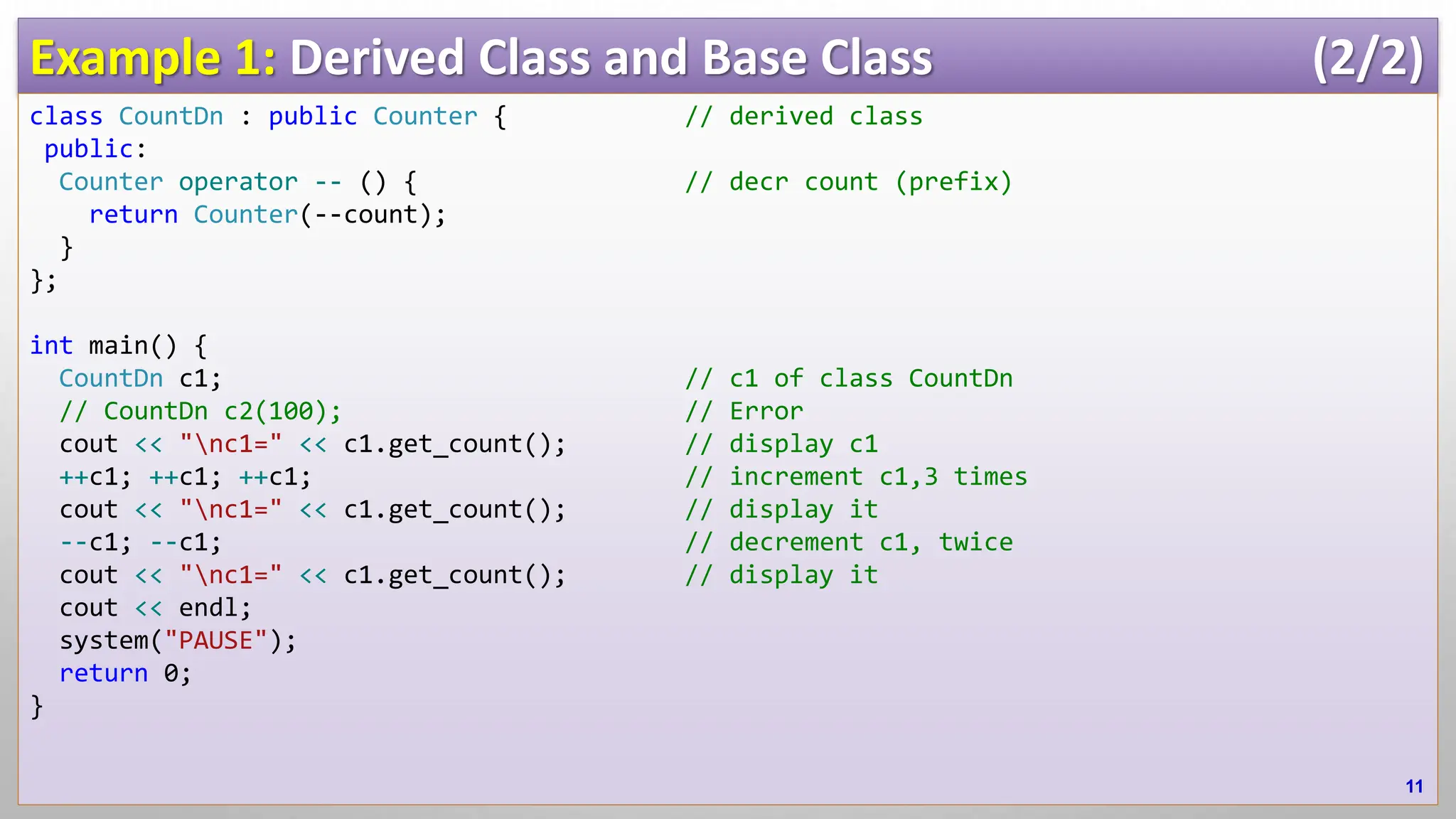

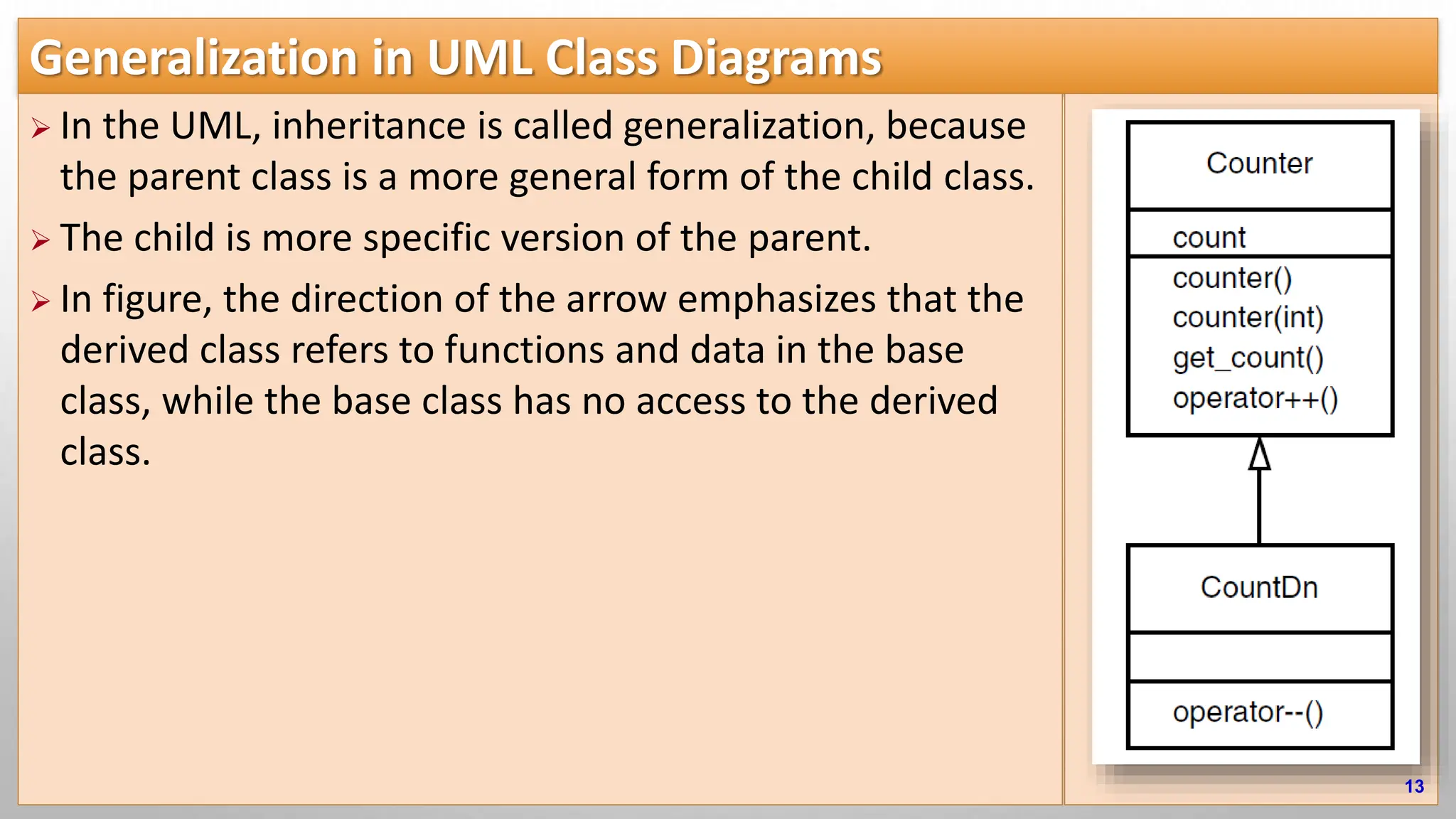
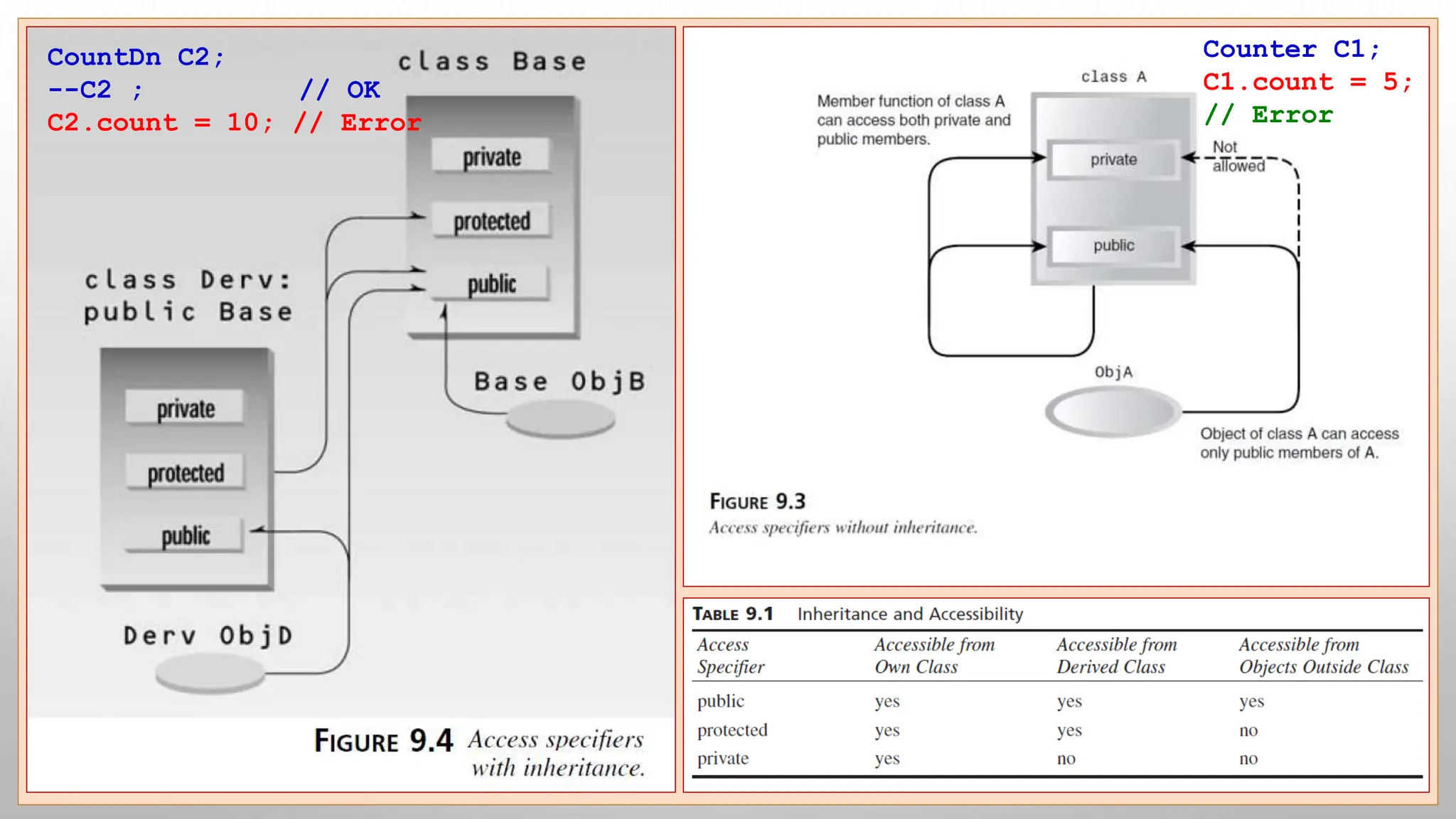


![Example 3: Overriding Member Functions (1/3) //overloading functions in base & derived classes #include <iostream> #include <process.h> using namespace std; class Stack { protected: // NOTE: can’t be private enum { MAX = 3 }; // size of stack array int st[MAX]; // stack: array of integers int top; // index to top of stack public: Stack() { top = -1; } // constructor void push(int var) { // put number on stack st[++top] = var; } int pop() { // take number off stack return st[top--]; } }; 17](https://image.slidesharecdn.com/ch09inheritance-240518104731-e244770d/75/Object-Oriented-Programming-using-C-Ch09-Inheritance-pptx-17-2048.jpg)
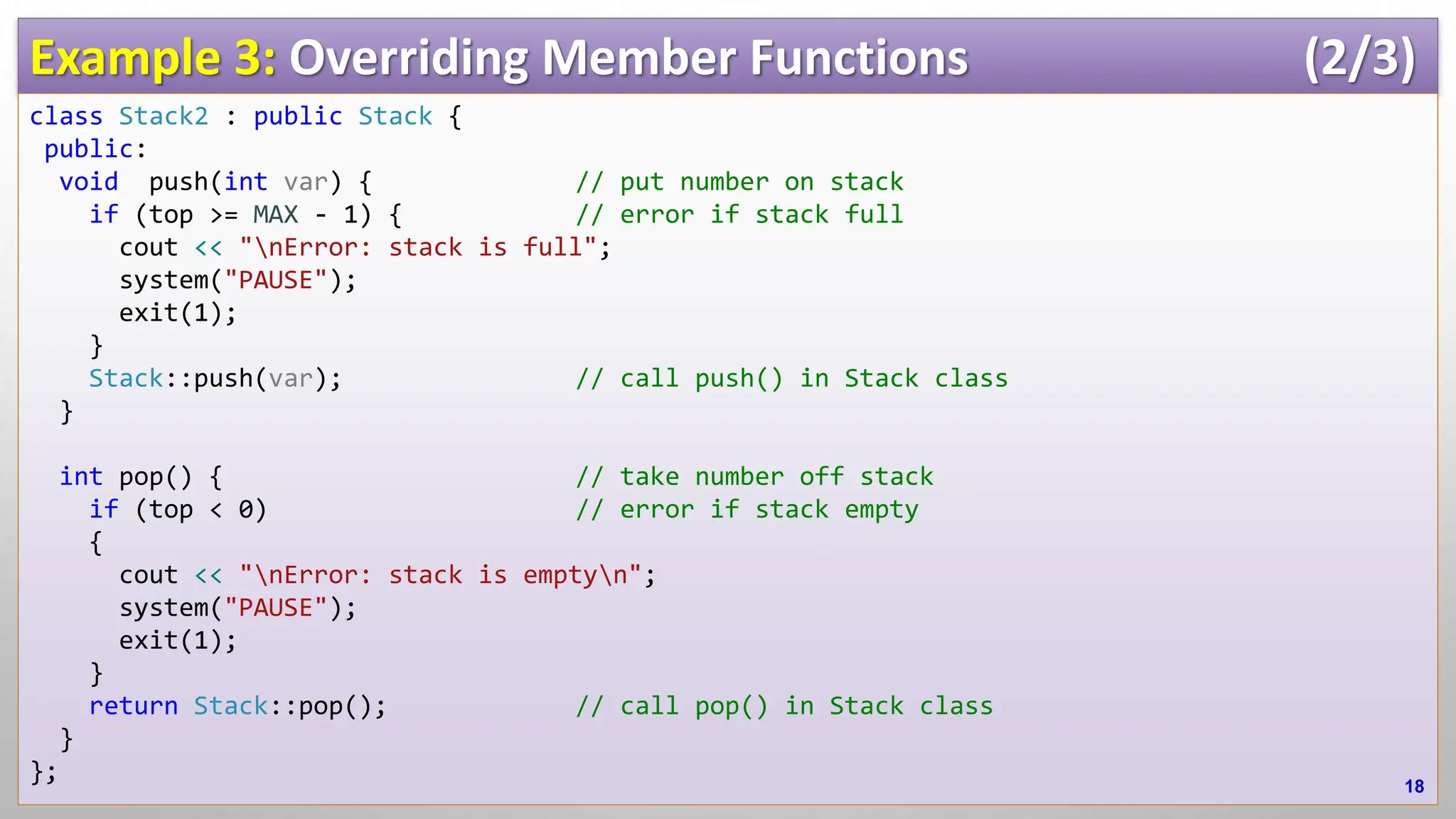
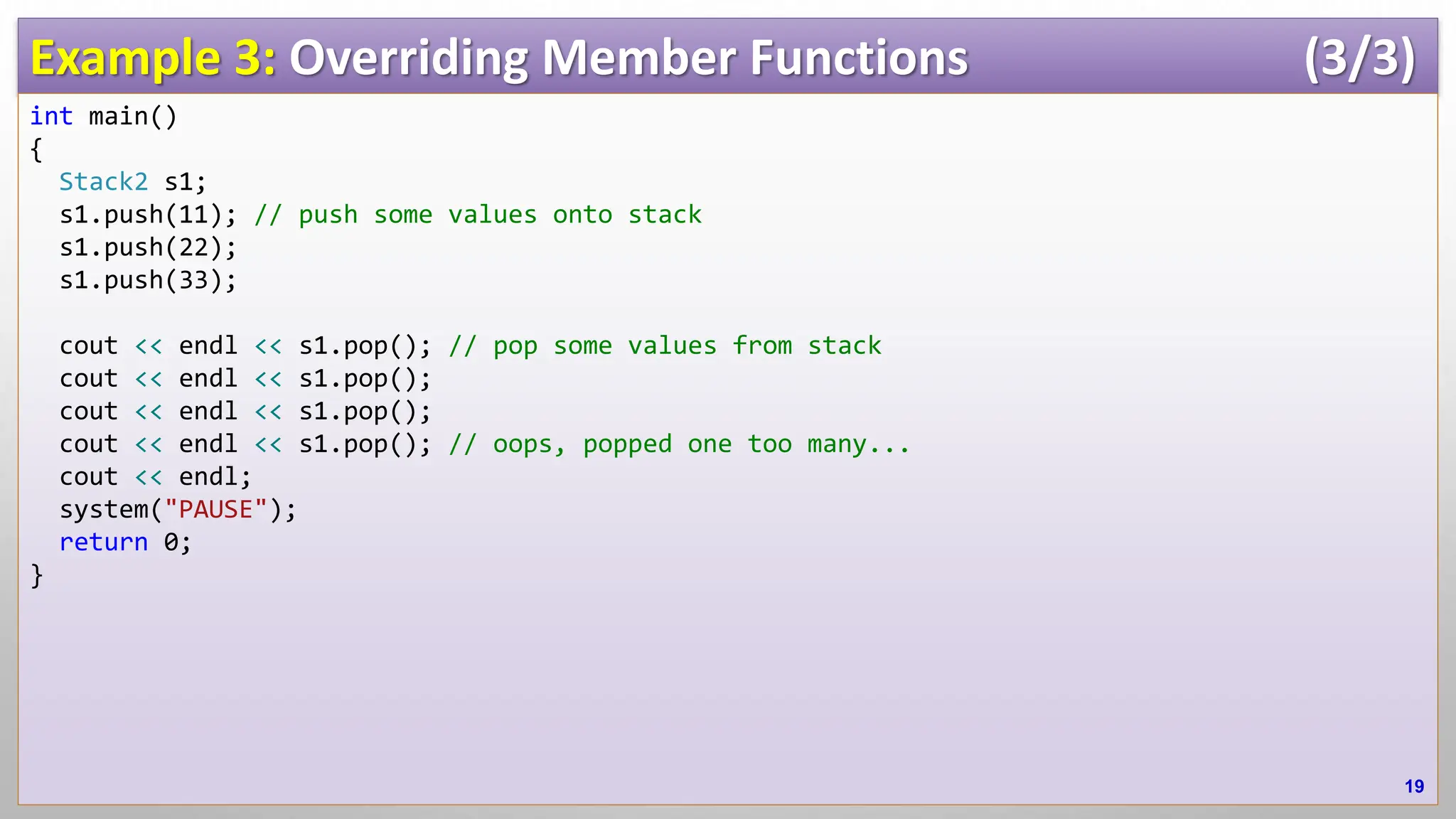
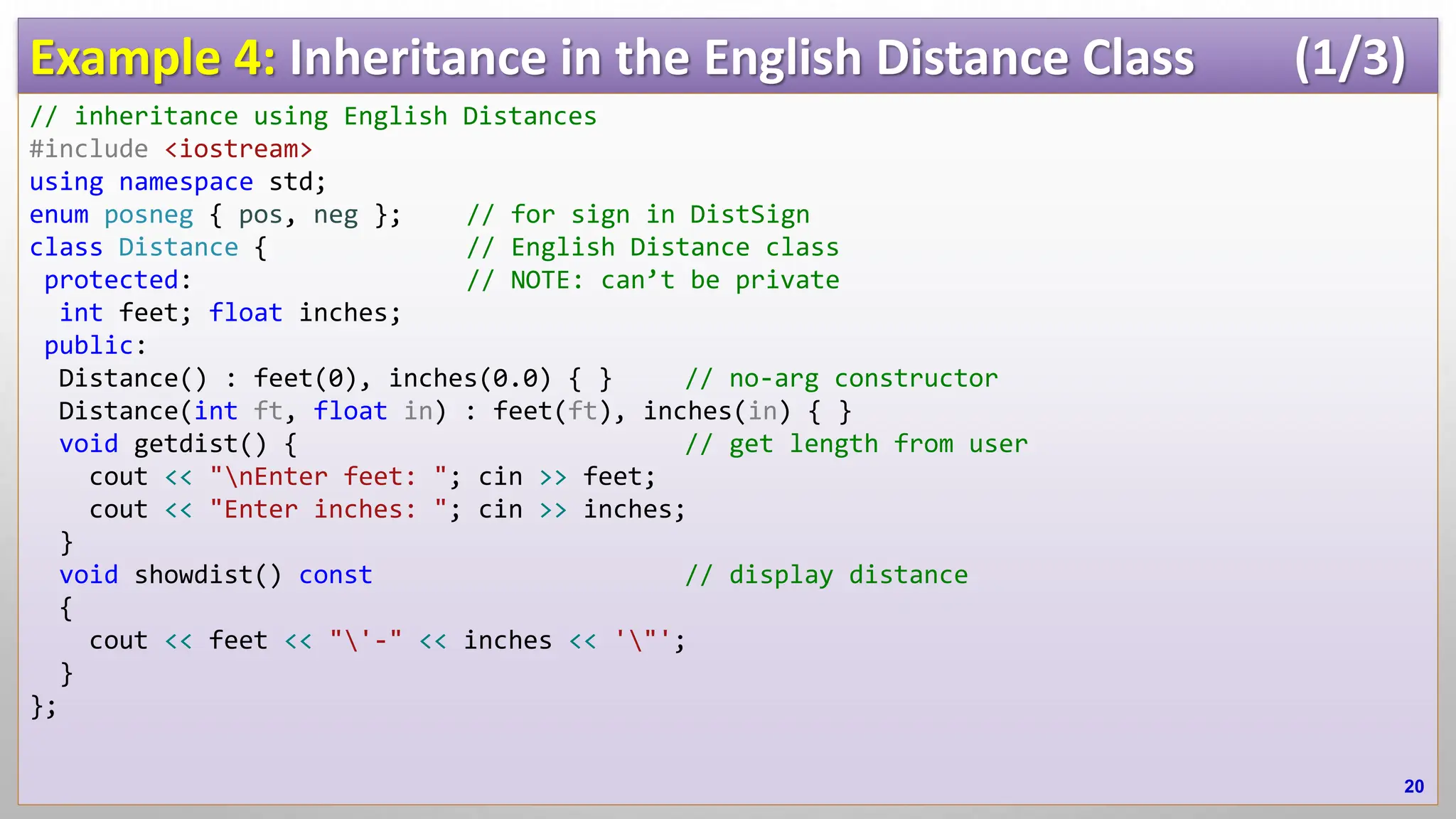
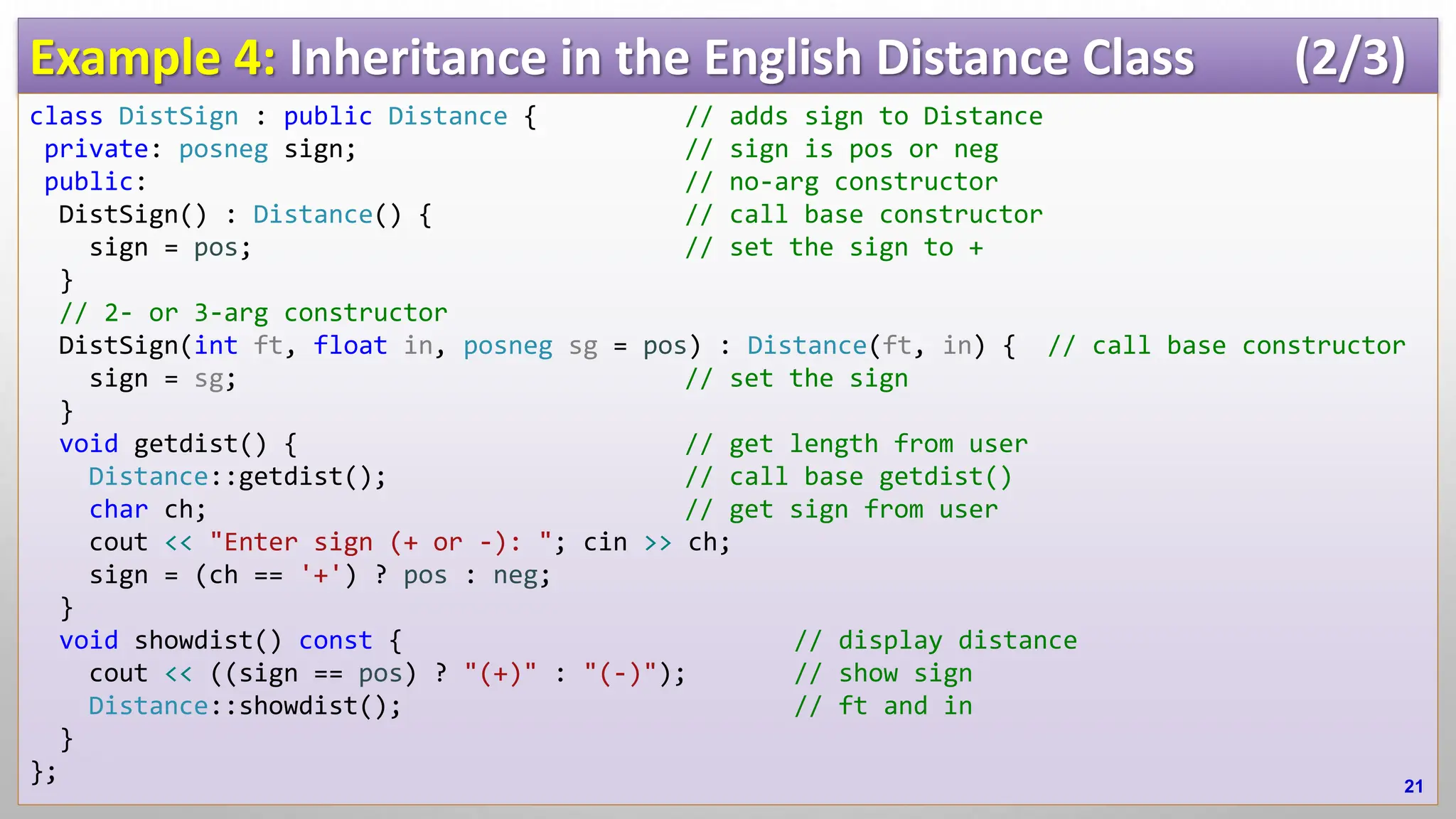

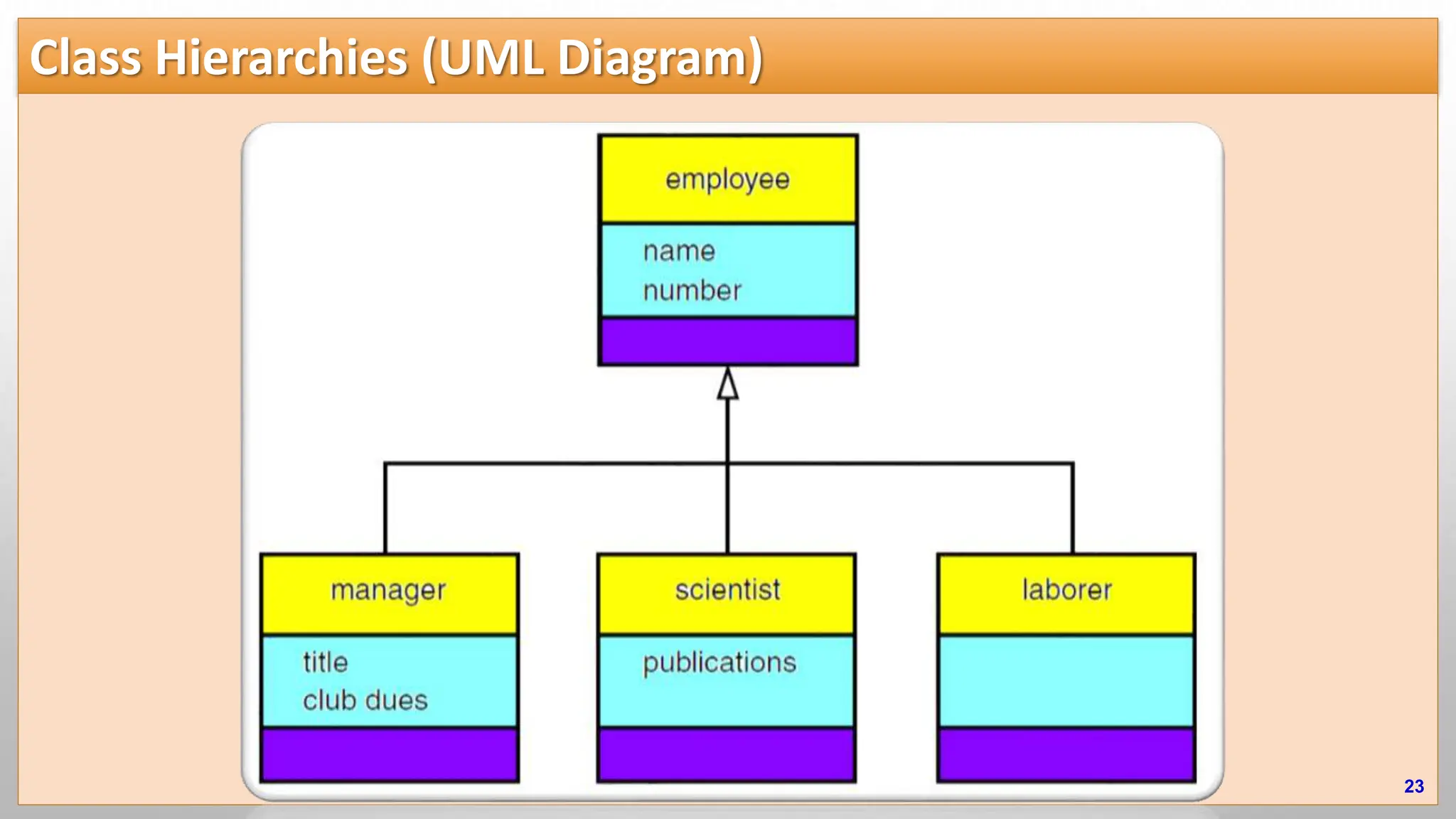
![Example 5: Class Hierarchies ( Employee Database ) (1/4) // models employee database using inheritance #include <iostream> using namespace std; const int LEN = 80; // maximum length of names class employee // employee class { private: char name[LEN]; // employee name unsigned long number; // employee number public: void getdata() { cout << "n Enter last name: "; cin.get(name, LEN); fflush(stdin); cout << " Enter number: "; cin >> number; } void putdata() const { cout << "n Name: " << name; cout << "n Number: " << number; } }; 24](https://image.slidesharecdn.com/ch09inheritance-240518104731-e244770d/75/Object-Oriented-Programming-using-C-Ch09-Inheritance-pptx-24-2048.jpg)
![Example 5: Class Hierarchies ( Employee Database ) (2/4) class manager : private employee { // management class private: char title[LEN]; // "vice-president" etc. double dues; // golf club dues public: void getdata() { employee::getdata(); cout << " Enter title: "; cin.get(title, LEN); cout << " Enter golf club dues: "; cin >> dues; } void putdata() const { employee::putdata(); cout << "n Title: " << title; cout << "n Golf club dues: " << dues; } }; 25](https://image.slidesharecdn.com/ch09inheritance-240518104731-e244770d/75/Object-Oriented-Programming-using-C-Ch09-Inheritance-pptx-25-2048.jpg)
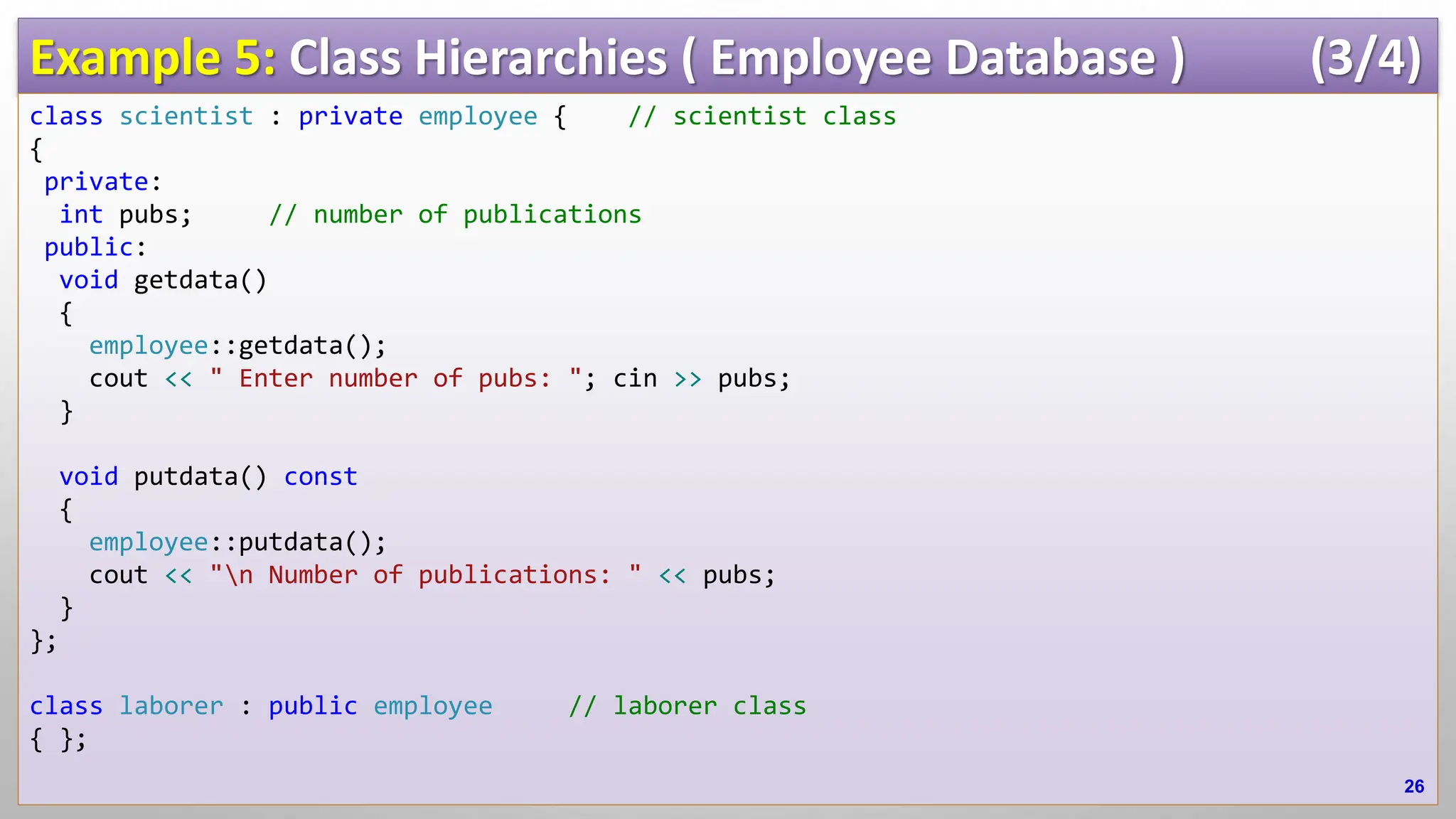
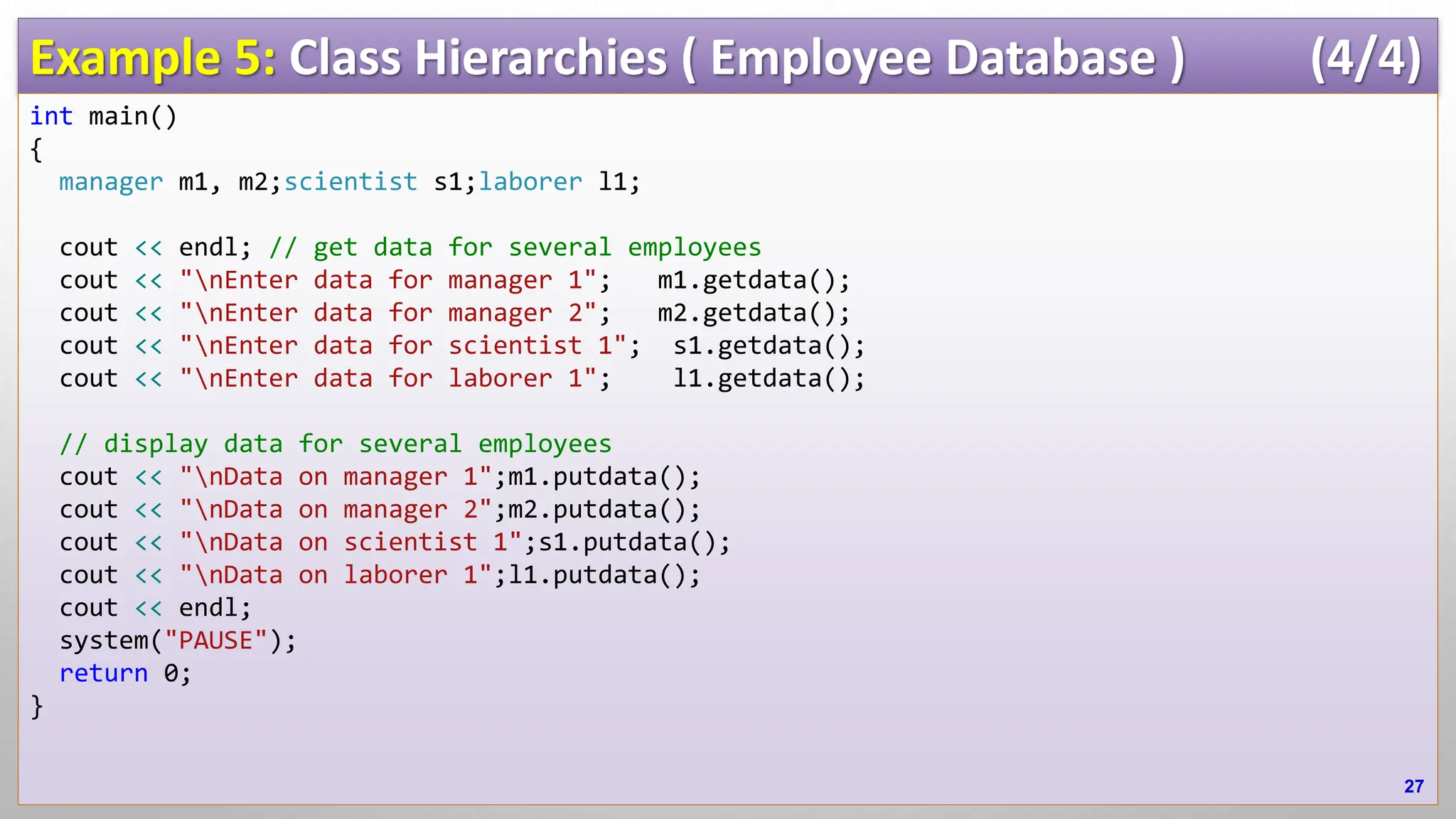
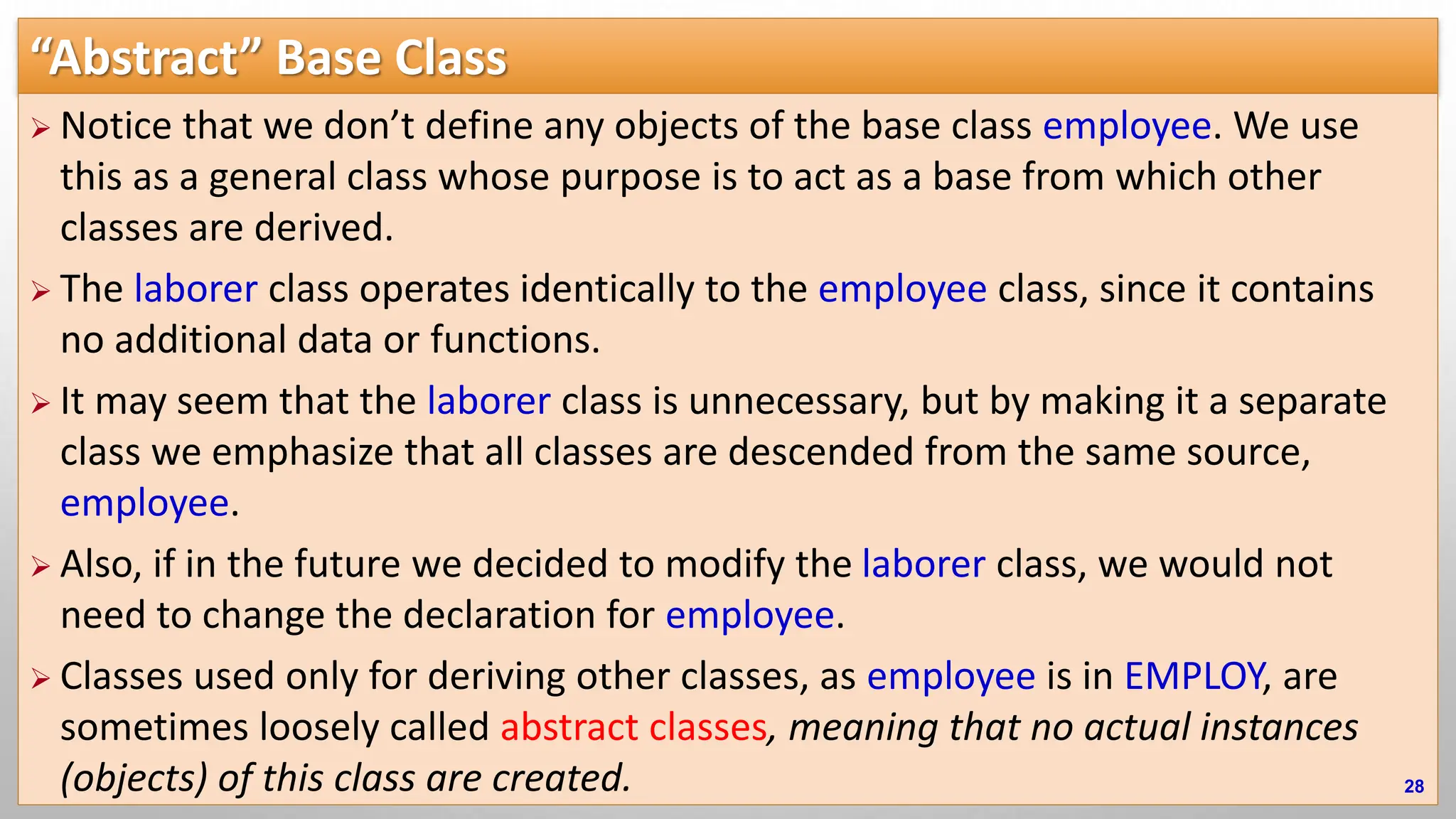
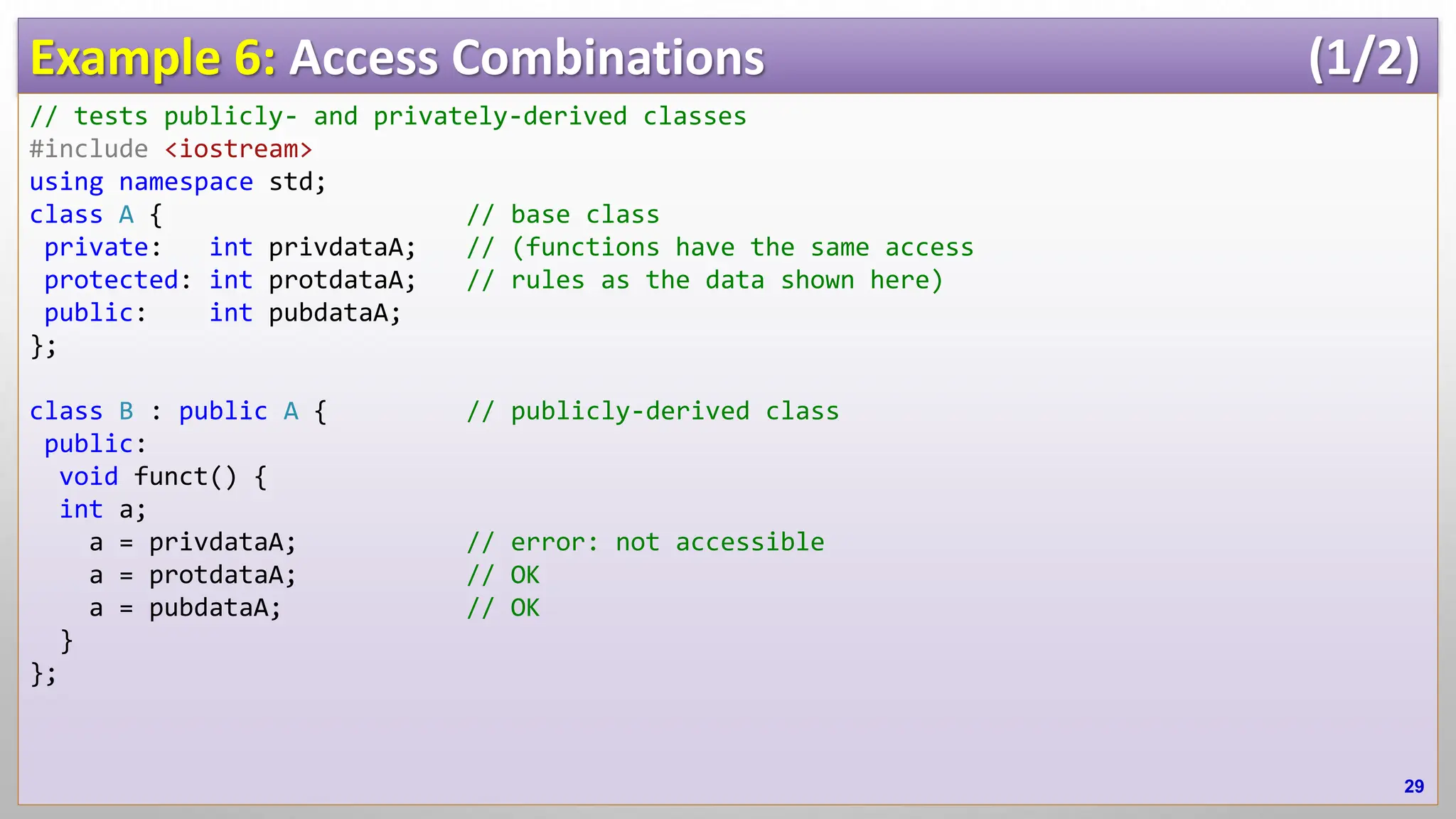
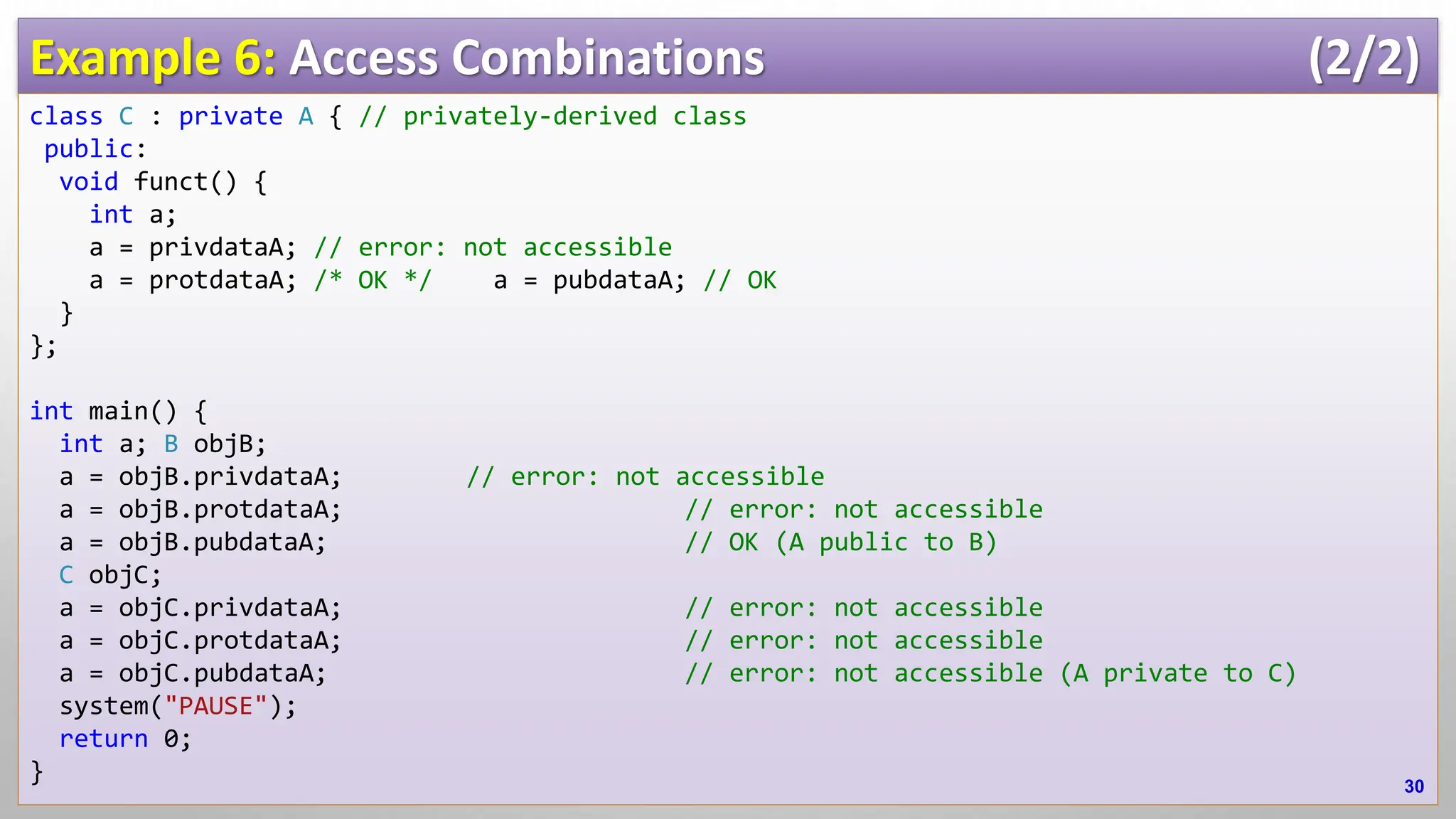
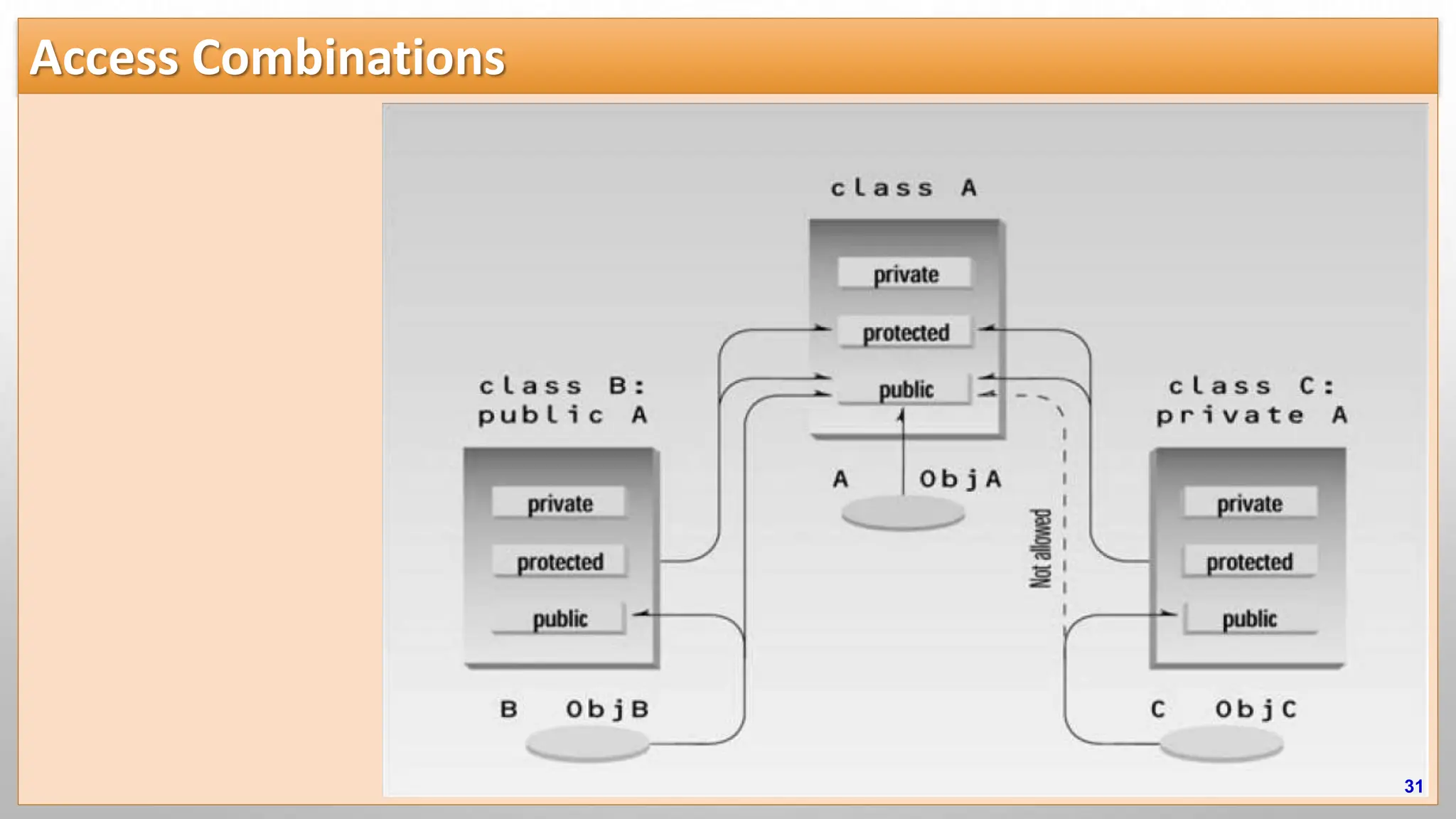
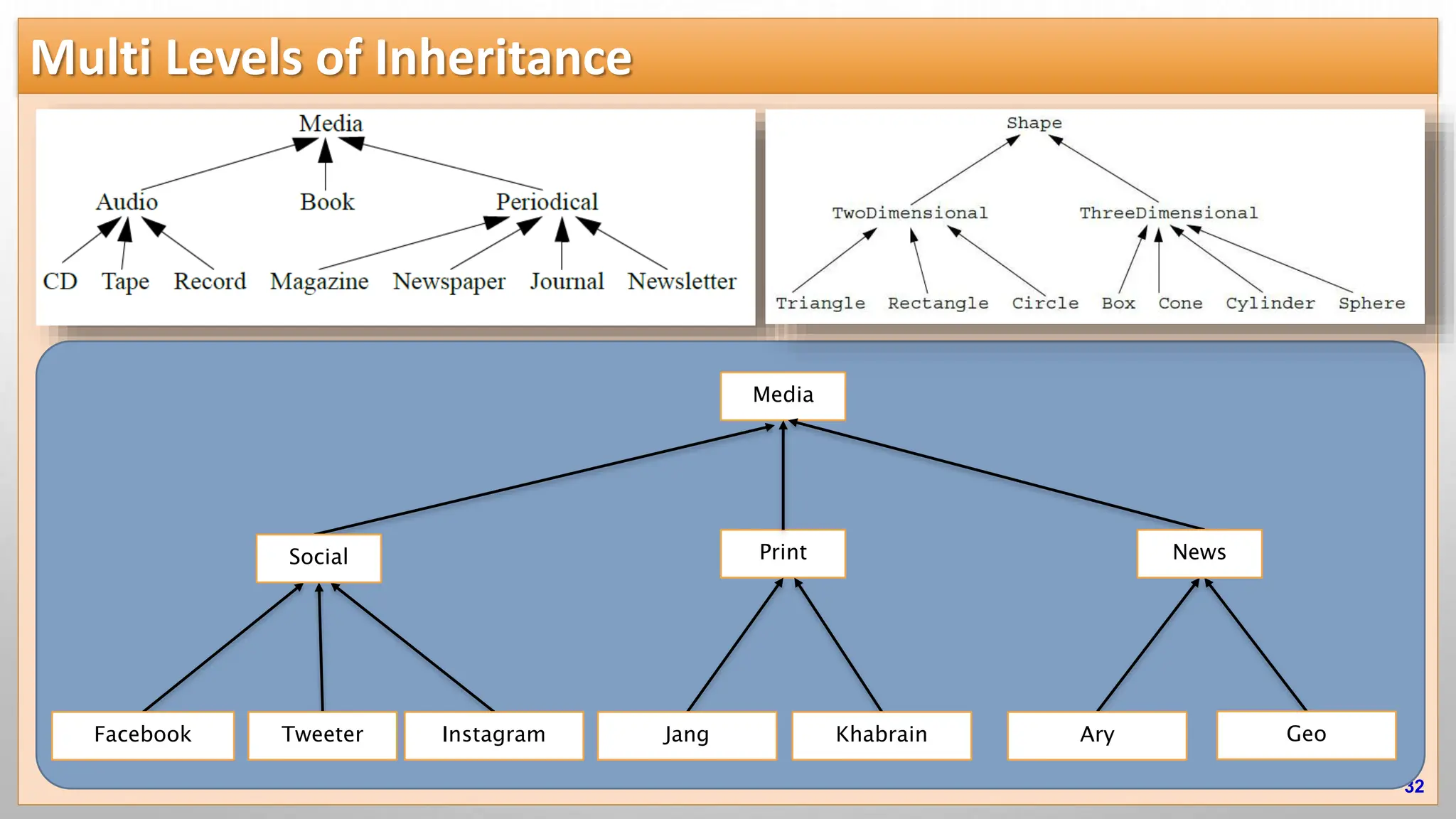
![Example 7: Multi Levels of Inheritance (1/4) // multiple levels of inheritance #include <iostream> #include <stdio.h> // for fflush() using namespace std; const int LEN = 80; class employee { private: char name[LEN]; unsigned long number; public: void getdata() { cout << "n Enter last name: "; cin.get(name, LEN); fflush(stdin); cout << " Enter number: "; cin >> number; fflush(stdin); } void putdata() const { cout << "n Name: " << name; cout << "n Number: " << number; } }; 33 UML Diagram](https://image.slidesharecdn.com/ch09inheritance-240518104731-e244770d/75/Object-Oriented-Programming-using-C-Ch09-Inheritance-pptx-33-2048.jpg)
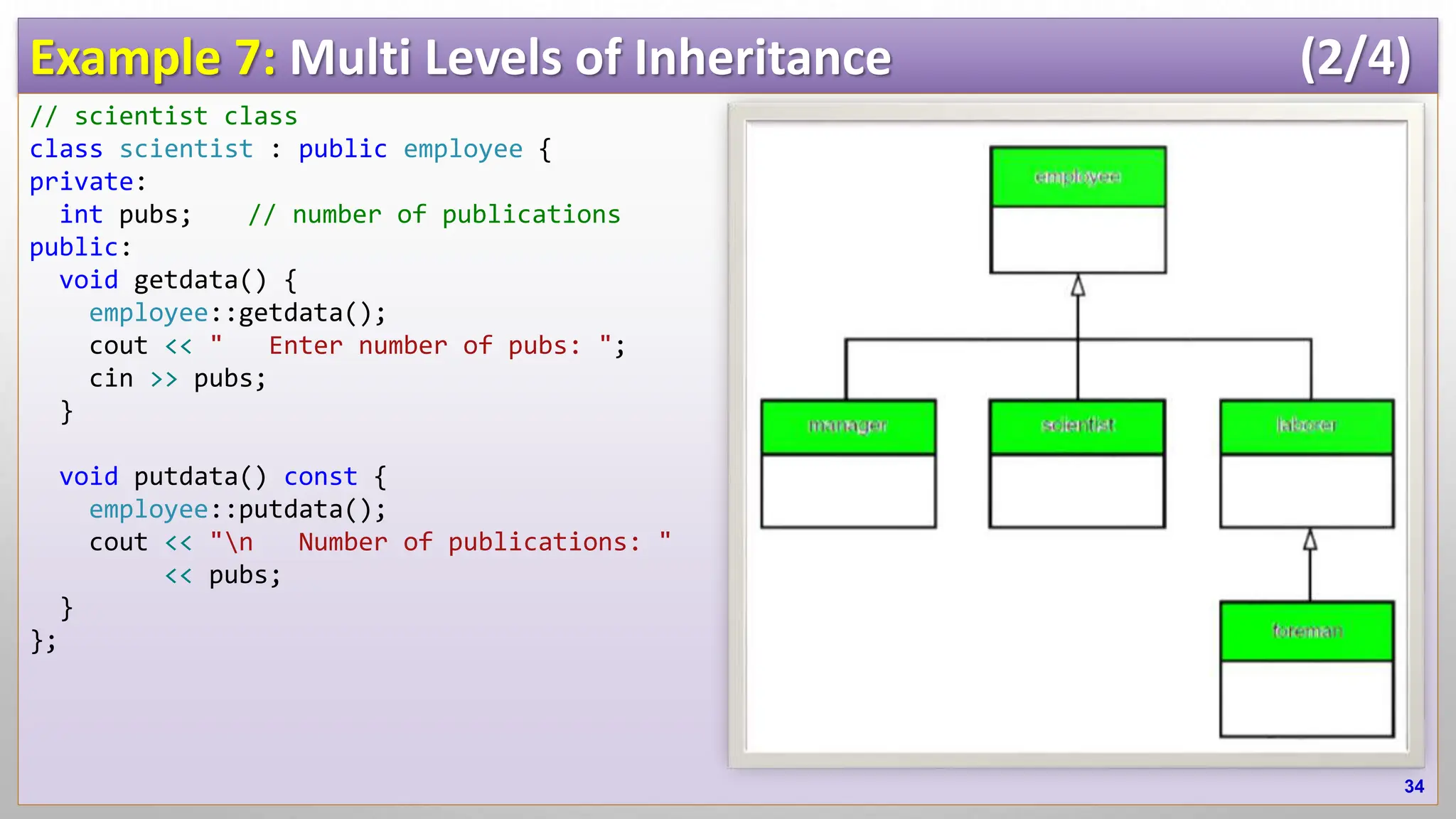
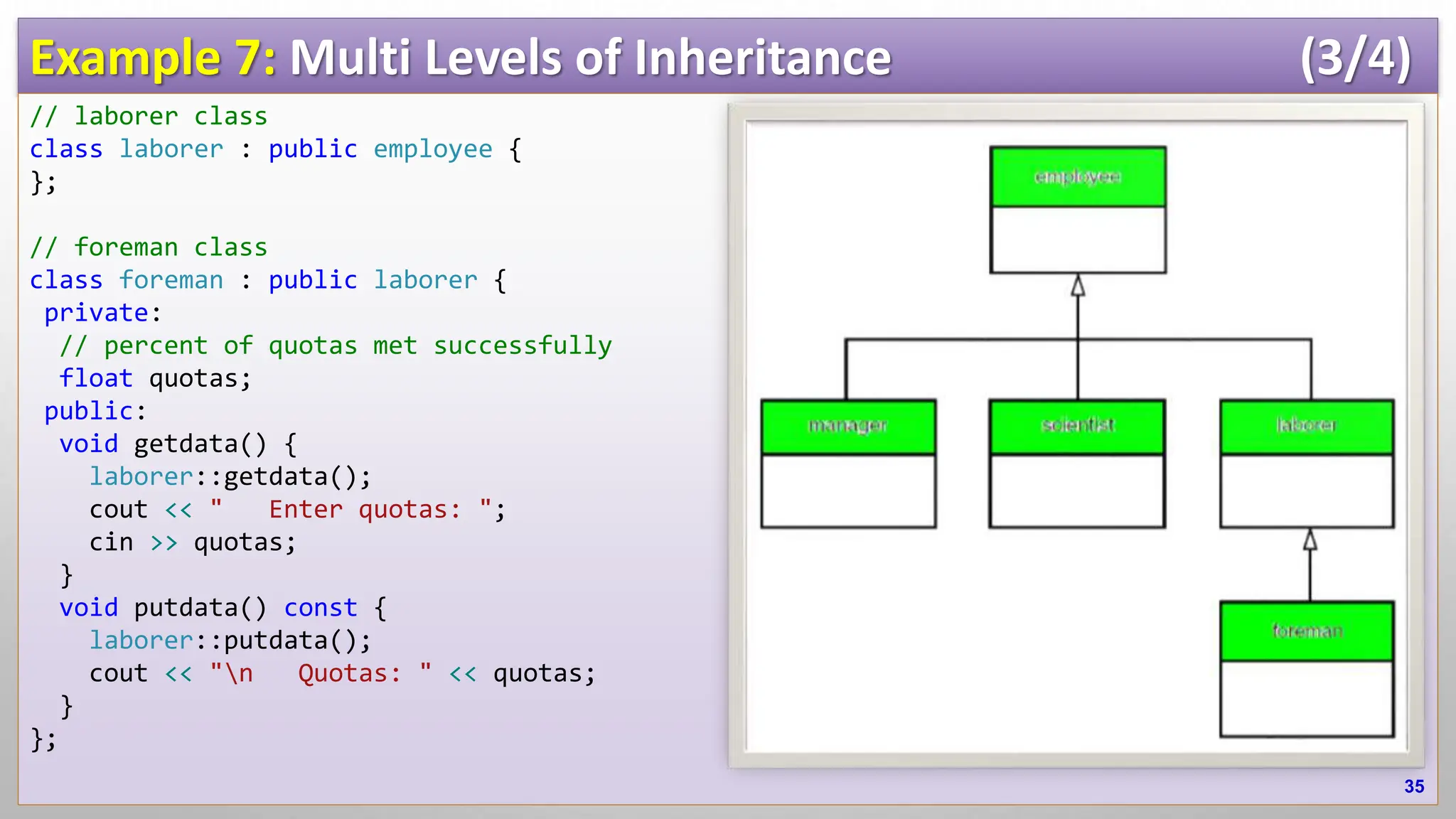
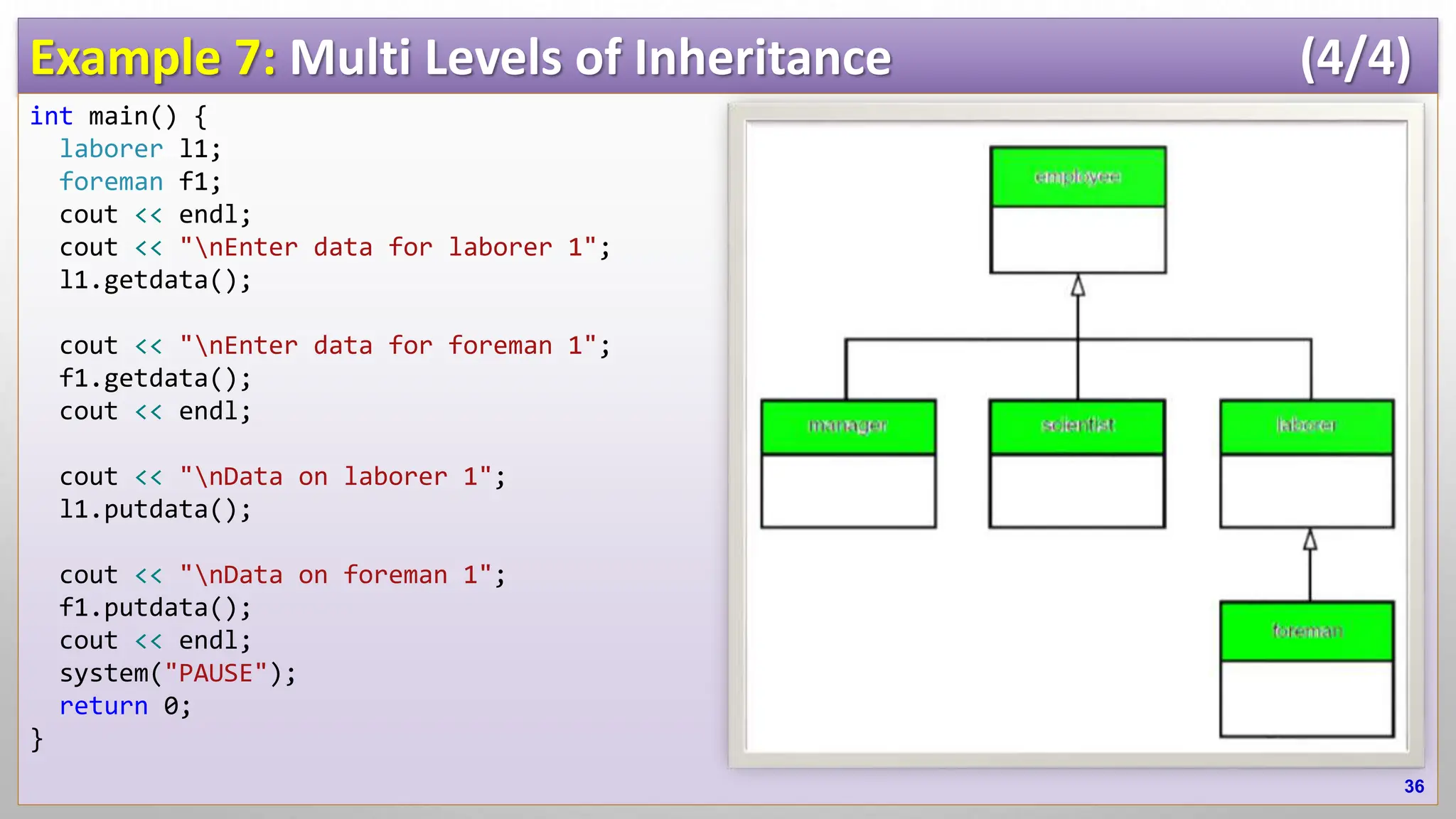
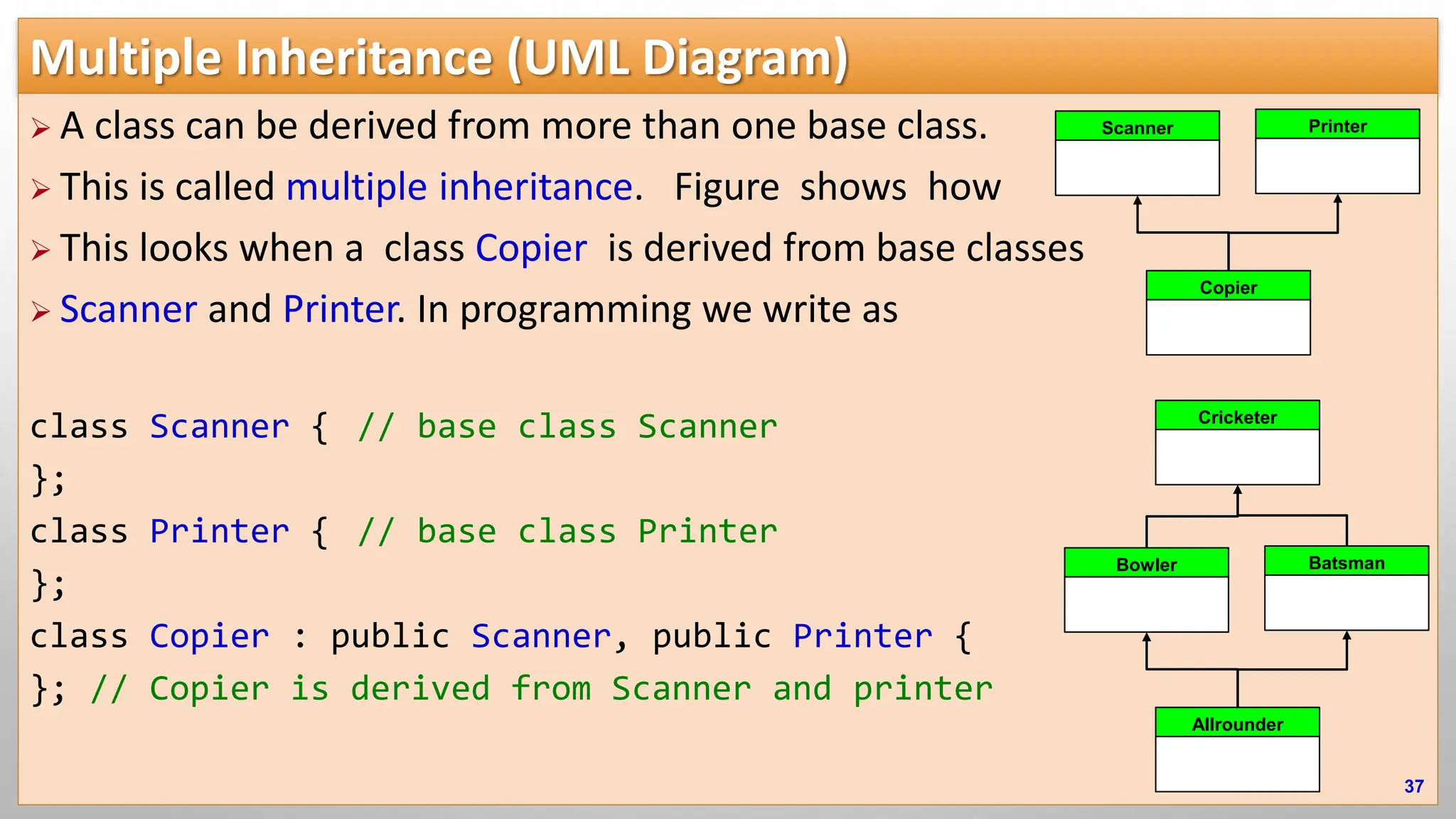

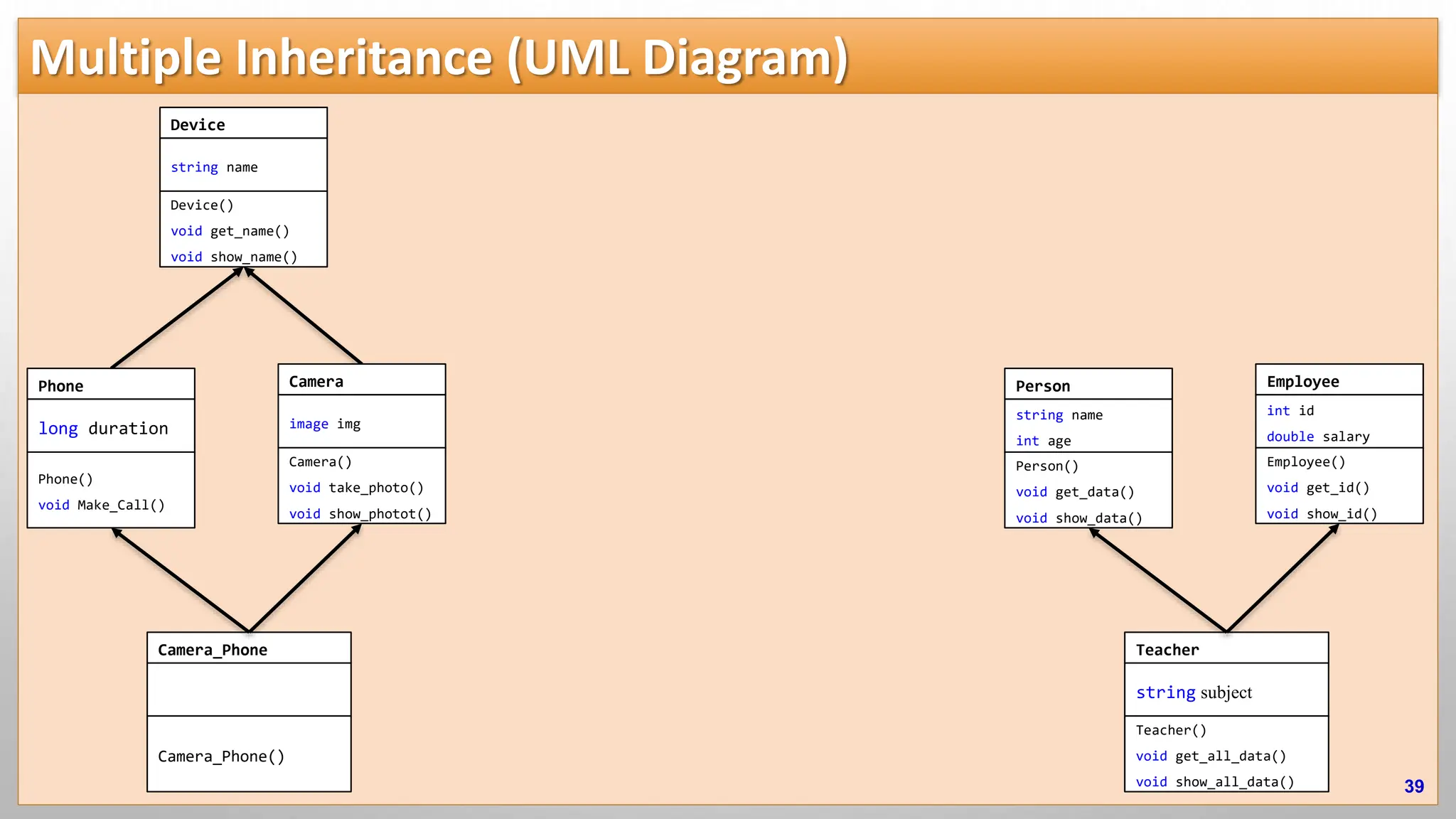
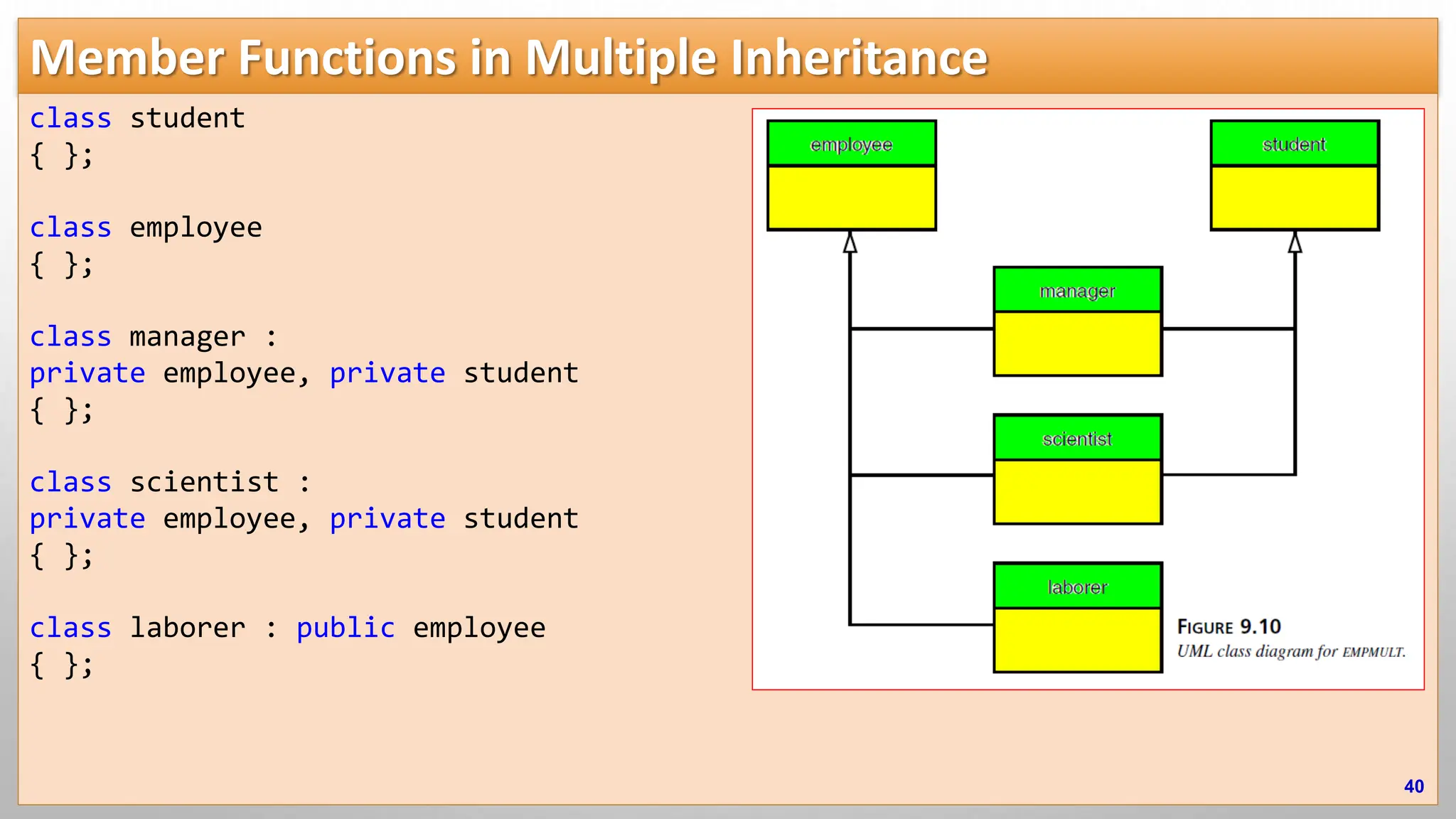
![Example 8: Member Functions in Multiple Inheritance (1/5) //multiple inheritance with employees and degrees #include <iostream> using namespace std; const int LEN = 80; // maximum length of names class student { // educational background private: char school[LEN]; // name of school or university char degree[LEN]; // highest degree earned public: void getedu() { cout << " Enter name of school or university: "; cin >> school; cout << " Enter highest degree earned n"; cout << " (Highschool, Bachelor's, Master's, PhD): "; cin >> degree; } void putedu() const { cout << "n School or university: " << school; cout << "n Highest degree earned: " << degree; } }; 41](https://image.slidesharecdn.com/ch09inheritance-240518104731-e244770d/75/Object-Oriented-Programming-using-C-Ch09-Inheritance-pptx-41-2048.jpg)
![Example 8: Member Functions in Multiple Inheritance (2/5) class employee { private: char name[LEN]; // employee name unsigned long number; // employee number public: void getdata() { cout << "n Enter last name: "; cin >> name; cout << " Enter number: "; cin >> number; } void putdata() const { cout << "n Name: " << name; cout << "n Number: " << number; } }; 42](https://image.slidesharecdn.com/ch09inheritance-240518104731-e244770d/75/Object-Oriented-Programming-using-C-Ch09-Inheritance-pptx-42-2048.jpg)
![Example 8: Member Functions in Multiple Inheritance (3/5) class manager : private employee, private student { private: char title[LEN]; // "vice-president" etc. double dues; // golf club dues public: void getdata() { employee::getdata(); cout << " Enter title: "; cin >> title; cout << " Enter golf club dues: "; cin >> dues; student::getedu(); } void putdata() const { employee::putdata(); cout << "n Title: " << title; cout << "n Golf club dues: " << dues; student::putedu(); } }; 43](https://image.slidesharecdn.com/ch09inheritance-240518104731-e244770d/75/Object-Oriented-Programming-using-C-Ch09-Inheritance-pptx-43-2048.jpg)

